City living can be stressful. Urban areas can be noisy and crowded, and commuting can be time-consuming and frustrating. Additionally, pollution and crime can be more prevalent in urban areas.
However, city living can also offer a wide range of benefits. Living in a city can provide access to a diverse range of cultural experiences, such as museums, galleries, concerts, and restaurants. It can also offer opportunities for career advancement, as many cities are home to a variety of industries and businesses.
Overall, whether city living is right for an individual depends on their preferences, priorities, and circumstances. Some people thrive in the fast-paced, vibrant environment of a city, while others prefer the peace and quiet of the countryside or suburbs. In this article, we have elaborated the top luxury house and lot in Laguna: Brittany Santa Rosa- Perfect Summer Escape.
What to know about Laguna?
On the Philippine island of Luzon, in the Calabarzon region, sits the province of Laguna. One of the Philippines’ most innovative, historically significant, and culturally rich provinces. It is composed of provinces namely Cavite, Laguna, Batangas, Rizal, and Quezon. Now, let us talk about Laguna.
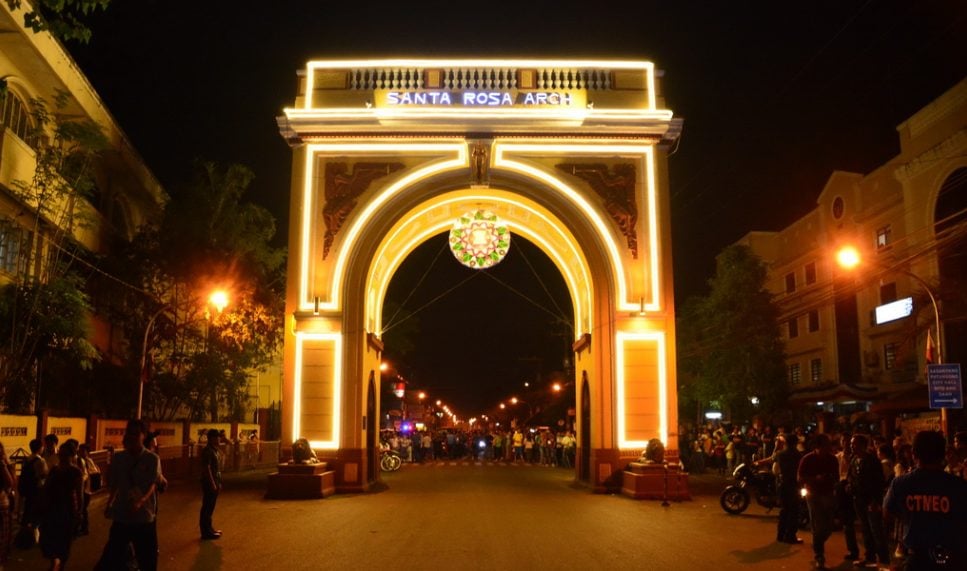
Its name came from the body of water that serves as the province of Laguna’s northern boundary that is called Laguna de Bay. Laguna de Bay, which translates as “Lake of Bay” in Spanish, was named after the town of Bay, the initial province capital. Later on, Sta. Cruz was replaced as the provincial capital. Many tourists visit the different municipalities and towns of Laguna during summer because the province is blessed with a wealth of natural resources, including a large number of mineral hot and cold springs, magnificent waterfalls, and protected forest regions rich with flora and fauna. One of its pride also include Calamba being the hometown of the country’s national hero- Dr. Jose Rizal. His famous tagline that people cling onto is “Laban Laguna!”
But aside from offering unique arts and crafts, tourist destinations, and famous delicacies, the province of Laguna is also a home to people who seek a balance of city and provincial life. If you are curious where is the best place for this dream, keep on reading this article.
The Magical City in Laguna
The City of Santa Rosa is a premier city in the Philippine province of Laguna. The Peruvian saint Saint Rose of Lima, whose protection and patronage the town was dedicated to, inspired the town’s name. During the time of the revolution, when the Philippines signed the Act of Independence on June 12, 1898, Sta. Rosa played a crucial role in the declaration of their independence from Spain. Since 1994, it has also been dubbed as the “The Investment Capital of South Luzon.” The city is a residential neighborhood of Metro Manila and is located 38 kilometers in the south of Metro Manila through the South Luzon Expressway (SLEX).
Why is it Magical? One of the country’s most renowned amusement parks is located in Sta. Rosa Laguna, near Tagaytay City. Its famous tagline goes “The Magic lives forever!” It may not brag of dropping waterfalls, tumbling panoramas nor is it surrounded by broad, hot springs. What Sta. Rosa City’s cultural and historical legacy more than makes up for any natural wonders that it lacks.
Luxury House and Lot in Sta. Rosa Laguna
Promenade is a luxury English Countryside by Brittany in Sta. Rosa. Why is it called Brittany Santa Rosa: Perfect Summer Escape? Here are the top reasons why.
Why Choose Brittany Santa Rosa #1: Inspired by the Beauty of Nature
The luxurious mansions, which are exquisitely constructed to blend the surrounding natural environment, rise inside the dense, lush forests that merge into breathtaking knot gardens. For those who seek a far more sophisticated but simpler and tranquil living, it will provide you with that peace of mind away from the city and a deep breath of relaxation. Spend your much-needed downtime here with your family and loved ones, free from the bustle of the city, the intrusion of tall, imposing structures, and other distractions, and able to relax in the comfort of your own house thanks to the moderate, pleasant, and gentle breeze.
Wake up to the tall swaying trees and lush plains that blanket the region make up Promenade’s property, making it ideal for a much easier way of life and retirement. Promenade was able to maintain an effective balance between its modern architecture and systematic civilization and its own distinctive ambiance and vibe.
Why Choose Brittany Santa Rosa #2: Great Amenities
The amenities that you can use enhance the property’s natural and protected beauty. Also influenced by the ambience of the English countryside. There are neighboring event facilities, a basketball court, and a private garden. A large fountain just across from the area leads to the Clubhouse, where everyone can unwind for as long as they like. Also included are two of the main golf courses in the South. The estate is close to Sta. Elena Golf and Country Club and the Country Club Philippines. And not to name the amenities which are the following:
Promenade Amenities:
- Sprawling Swimming Pool
- Basketball Court
- Jogging Pave way
- Landscaped Playgrounds and Parks
- Clubhouse with Function Room
Exclusive Utilities
- Buffer Trees and Perimeter fences for boundary lots
- Underground utilities for cable, power and communication
- Alternate Day Garbage Collection
- Deep wells and water reservoir for round the clock water supply
- Professional and highly-trained property management team and security
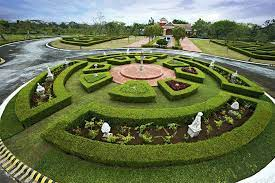
Why Choose Brittany Santa Rosa #3: Accessibility and Convenience
The Promenade is an integral part of the recognizable Sta. Rosa Laguna. The greatest schools in the South of Metro Manila are located in the area’s newest, fastest-rising residential neighborhood, which young urban families opt for because it’s only 45 minutes away from Makati CBD. Its strategic location, which initially made it the greatest option for residential suburbs of Metro Manila, has been its biggest asset for accessibility to the nation’s metropolis establishments. It provides quick access to the South Luzon Expressway (SLEX) where you can exit through the Asia Brewery/Greenfield Exit or the Sta. Rosa Exit.
Why Choose Brittany Santa Rosa #4: Safe and Secured Environment
Among the things we need to think about is making sure our family is content and comfortable. Additionally, the safety of your family is what matters most, thus Brittany Promenade has a master planned community for safety precautions:
- Security post at the boundary line
- a minimum of two security personnel per gate
- professional security personnel
- continuous mobile security
Major Requirements for Acquiring the Property
- Business registration photocopy (DTI/SEC)
- Mayor’s Permit
- ITR for the last two (2) years
- Franchise/OR/CR (for taxi, jeepney, bus operators)
- PTR (for Practicing professionals)
- six (6) months’ worth of bank statements
- Picture of Business Establishment
- Business Profile (if applicable)
- Lease Agreement (if applicable)
- Certificate from the Secretary and Board Resolution (for corporation)
- Constitutional Documents (for corporation)
Why Choose Brittany Santa Rosa, the Perfect Summer Escape?
Brittany Corporation only offers nothing but luxury and sophistication. If you are torn between having the view of greenery and buildings, this is the perfect place for you. You can enjoy being at the comfort of nature and city living. A perfect summer getaway vibe!
With a wide choice of top-notch amenities and services, Brittany Sta. Rosa made sure that its residents could enjoy outside recreation while yet living inside guarded luxury neighborhoods. Future homeowners may anticipate the best possible living standards and outstanding workmanship in every property. It will convince you that choosing to reside in this master-planned community, which was created only by renowned architects and builders, was the perfect choice.
Suggested Read: Here’s How To Turn Any Attic into A Wonderful Escape
Suggested Read: Luxury Summer Home: Benefits And Top Spots to Pick
Suggested Read: A Cool Summer Getaway At Crosswinds Tagaytay
Suggested Read: Notable Luxury Properties For Sale In Laguna
Suggested Read: Benefits Of Owning A Luxury Summer Home
Laguna is a province located in the CALABARZON region of the Philippines. It is situated southeast of Metro Manila and is bordered by the provinces of Rizal to the north, Quezon to the east, Batangas to the south, and Cavite to the west.
Laguna is known for its natural hot springs and resorts, as well as its historical landmarks and cultural heritage. Some of the popular tourist destinations in the province include the Pagsanjan Falls, the Rizal Shrine in Calamba, and the Enchanted Kingdom theme park in Santa Rosa.
The province is home to several industries, including manufacturing, agriculture, and tourism. Some of the major cities and towns in Laguna include San Pedro, Biñan, Santa Rosa, Calamba, and Los Baños.
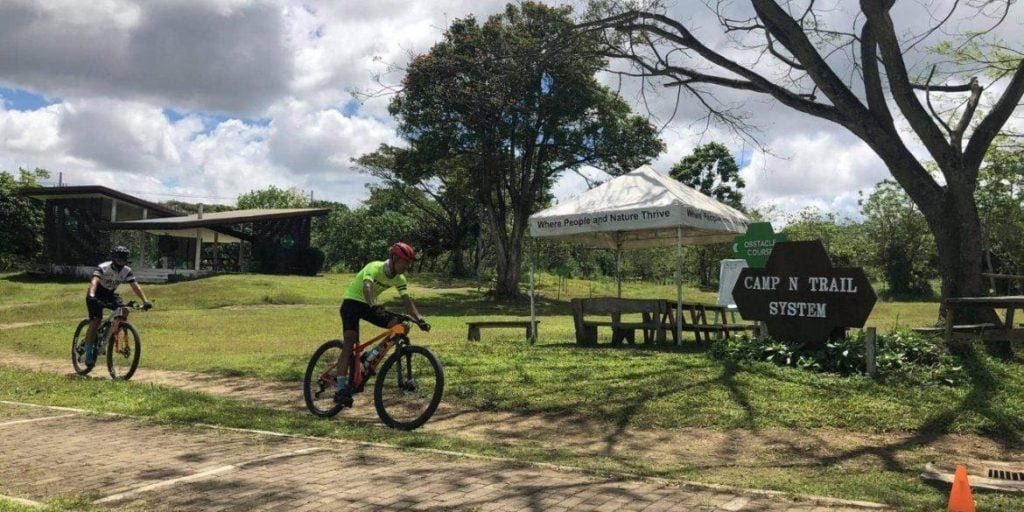
The Rich City of Laguna
Santa Rosa is a city located in the province of Laguna, Philippines. It is situated approximately 38 kilometers south of Metro Manila and is one of the fastest-growing cities in the CALABARZON region. It is considered one of the richest municipalities in Laguna.
Santa Rosa is known for its industrial parks and economic zones, which house numerous manufacturing and technology companies. Some of the notable industrial parks in the city include the Laguna Technopark, Carmelray Industrial Park, and the Santa Rosa Business Park.
The city is also known for its culinary scene, with several restaurants and cafes offering local and international cuisine. Some of the popular dishes in Santa Rosa include buko pie, lechon, and sisig.
Aside from its industrial economy, Santa Rosa is also home to several popular tourist destinations. These include the Enchanted Kingdom, a theme park that features various rides and attractions. But aside from this, did you know that Sta. Rosa is also a home for outdoor activities in Laguna. If you are looking for a place or planning some things to do in Laguna during summer, keep on reading this article.
Things to do in Laguna to Revitalize your Energy
We have listed the places to visit in Santa Rosa if you’re planning to bring your family, friends, or just yourself to the most popular destinations that you may have never been to.
Outdoor Activities In Laguna #1: Coca-Cola Pavilion
If your companions are the ones who want to dive into history, one of the outdoor activities that suit you is visiting a museum. At the Coca-Cola Bottling Plant in Santa Rosa, Laguna, there is a museum and theater complex called the Coca-Cola Pavilion. Through displays and multimedia presentations, the museum tells the tale of Coca-Cola in the Philippines, examining its past, present, and future. It also highlights a collection of artifacts that includes a soda fountain with a working jukebox that plays CDs.
On-demand, the museum offers talks on the manufacturing process. Although there is no charge for entrance, reservations are required, and it is only open from Tuesday through Saturday during business hours.
Outdoor Activities In Laguna #2: A Visit to Santa Rosa’s History
Next to the list of your outdoor activities in Laguna is another museum visit. Go visit the Gusaling Museum located in downtown Santa Rosa to immerse yourself in some history and art. The location depicts the history of Santa Rosa’s founding and the significance of the area to the Laguna Province. It exhibits numerous World War II artifacts and relics as well as famous persons from Santa Rosa who were born. From 8 am to 5 pm, Gusaling Museo is open. Under Gobernadorcillo Don Bernardo Zavalla’s rule, the Santa Rosa Museum building was constructed in 1828 during the Spanish era as a government structure. It underwent a reorganization in 1954. The lengthy history of Sta. Rosa is currently on display in the former town hall and the importance of it to Laguna as a whole. It exhibits artifacts and furnishings from the pre-Spanish era until World War II, as well as relics of well-known local figures.
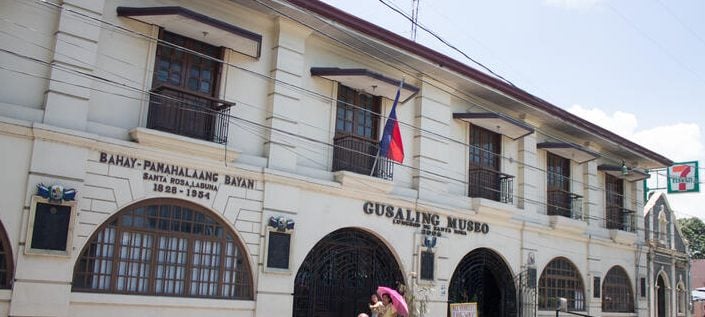
Outdoor Activities In Laguna #3: Fishing and Water Taxi Adventure
You won’t just be able to enjoy the beautiful surroundings in Nuvali. You’ll be inspired to give some outdoor activities a try! These are some of the recommended things to do in Laguna.
One of the sports and best things you can do to really appreciate the area’s lush-looking bright environment is to go biking. Additionally, the area features biking lanes and trails because it promotes ecological living, making it quite comfortable for you to pedal around. Fish feeding is an additional pastime that will increase your appreciation of nature and all living things. Watch them as they crowd around every piece of fish food you put out. However, the management only permits you to feed the fish with fish food that you have purchased from them. In addition to being aesthetically pleasing, the 4-hectare multipurpose lake performs a number of useful functions. It functions as a stormwater collecting system, a water reservoir, a fire reserve, and a mode of alternate transportation. Given the wide range of lakes, another activity that you can add to your things to do in Santa Rosa is ride a water taxi.
Outdoor Activities In Laguna #4: Visit the Fun Farm
Sta. Elena’s Fun Farm is a natural playground where both children and adults can interact with wildlife. They provide a place to escape the hectic pace of the city and the world of devices. Children can run around uninhibited in wide open places and make friends with animals there.
The Fun Farm is the perfect place if you are looking for a venue for celebrations and picnics, little natural play areas, a small lagoon, a huge sandbox, animal feeding stations, stables for horses, and an amphitheater. Other outdoor activities include ziplining, building sandcastles, going rowing or fishing with all the necessary gear and equipment, and much more. On this farm, there is always something to do.
Outdoor Activities In Laguna #5: Backyard Skatepark
If you want to experience extreme outdoor activities, you must check this out. The most recent addition to the Philippines’ expanding skateboarding culture is Backyard Skatepark. The skating experience is authentic thanks to the precise illumination, obstacles, and pool at this Santa Rosa attraction. Jam sessions and skate competitions made for an action-packed day. It is absolutely wonderful and contains ramps and curves for every skill level, from beginner to experienced. The skatepark is viewed as a training ground for X-Game competitors who will represent their nation with distinction. The skate park is located in the barangay of Tagapo City in Sta. Rosa Laguna. In conclusion, this skatepark is a great location!
Outdoor Activities In Laguna #6: Archery Experience
Majarlika Archery Range is a well-liked option for outdoor activities in Laguna. It’s good to know that this Santa Rosa attraction contains everything archery fans could possibly require. Their archery workshops and classes are a benefit for this must-try activity. The facilitators’ sound advice and direction are invaluable for both experienced archers and beginners. Daily hours of operation for Majarlika Archery Range are 9 AM to 9 PM.
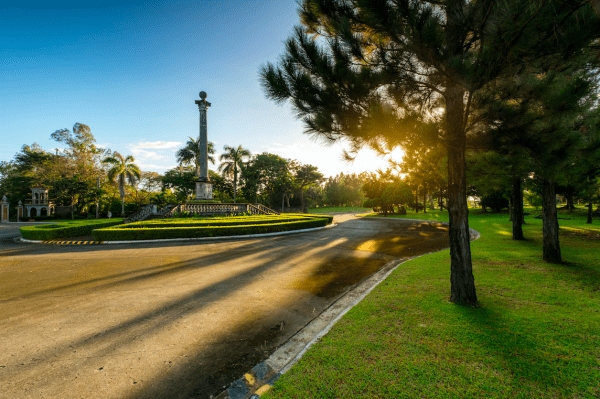
Outdoor Activities In Laguna #7: Shop at Vista Mall
Visit one of the best shopping centers in the area just next to Valenza after such activities. Nearly all of the necessities are available at Vista Mall, including furniture, clothing, food, and even Instagram-worthy stores where you just want to spend time. After getting fitted and purchasing apparel from Vista Mall’s branded clothing booths, enjoy a meal with your family at one of the many renowned restaurants. Visit a few spas and treat yourself to a face cleanse and mani-pedi.
Make Most with Brittany Santa Rosa
Do not miss any of the exciting outdoor activities and things to do in Laguna, particularly in Santa Rosa. Buy a house and lot near Nuvali if you want to enjoy strolling in the ecological parks and a non-stop shopping spree at Solenad!
You may also check out your choice of luxury house and lot in Santa Rosa for sale.
Suggested Read: Fun In The Sun: Summer Family Activities In Santa Rosa
Suggested Read: Thematic High-End Communities In Laguna
Suggested Read: Bathroom Fixtures You Must Have
Suggested Read: Travel Santa Rosa This 2022
Summer is the best time of the year because you get to spend most of your time with your family. The rest of the year might be for work or business and just a little time for bonding moments. That is why this summertime, we want you to make the most of your vacation by spending time with your children or the rest of your family members. The vacation and beach season also fall into the summer season. However, summer holidays don’t just have to involve sunbathing and swimming in a resort. In this article, we will help you find the most interesting activities to enjoy this summer.
If you are wondering where to go and make everything worthwhile, Santa Rosa Laguna must be the perfect place you are looking for. You can be sure that there are places and excursions in Santa Rosa that offer what your group is searching for, whether they are history enthusiasts, thrill seekers, lovers of staycations, or foodies.
Is Santa Rosa a Convenient Area for Family Bonding?
You can readily connect to other surrounding locations including Muntinlupa, Biñan, Calamba, Silang, Cavite, and Tagaytay via accessible roads and highways. So having a house and lot for sale in Sta. Rosa Laguna translates to a quick commute to your preferred vacation or work destinations!
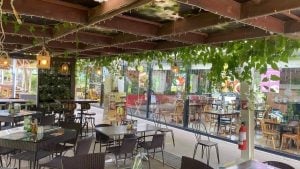
Fun Things to Do in Santa Rosa with Kids
We have listed the top places where you and your kids will enjoy creating memories of your summer family activities in Santa Rosa .
Summer Family Activities in Santa Rosa #1: Enchanted Kingdom
A well-known theme park called Enchanted Kingdom can be found in Santa Rosa, Laguna. Since its opening in 1995, both residents and visitors have enjoyed visiting it.
The park offers a variety of family-friendly attractions and performances, and not to mention a large choice of rides and attractions. The Space Shuttle, Jungle Log Jam, and Rio Grande Rapids are a few of Enchanted Kingdom’s most popular rides.
Enchanted Kingdom offers a variety of food and drink options in addition to its rides and attractions, as well as retail stores with goods and mementos. In general, Enchanted Kingdom is a great place for families, adventurers, and anyone looking for a fun and thrilling day out.
Activities:
- Ride the roller coasters: The Space Shuttle and the Jungle Log Jam are just a couple of the thrilling roller coasters that Enchanted Kingdom has to offer.
- Enjoy the water rides: To cool yourself from the heat, the park also offers water rides like the Rio Grande Rapids and the Rialto.
- Discover family-friendly attractions: The Flying Fiesta and the Dodgem are just two of the family- and kid-friendly attractions available at Enchanted Kingdom.
- Watch performances: The park hosts a number of daily events, including the Enchanting Parade and the Eldar’s Theater, which feature dance routines, live music, and other entertainment.
- Try the carnival games: The park offers a number of carnival games where you may put your talents to the test and win rewards.
- Enjoy a picnic: Enchanted Kingdom offers locations for guests to unwind and savor their own food and beverages.
- Shop for gifts: The park features a number of retail establishments where guests can purchase gifts and souvenirs from the Enchanted Kingdom.
Summer Family Activities in Santa Rosa #2: Sta. Elena Fun Farm
If you want to enjoy nature with your family, the Fun Farm at Sta. Elena is an agri-tourism destination located in Santa Rosa. The farm covers 5 hectares of land and is designed to be a fun and educational experience for visitors, especially families with young children. This is one of the reasons why you should include this activity on the list, the kids will surely enjoy!
Activities:
- Visit the farm animals: Visitors can engage with a variety of animals at the farm, including cows, goats, chickens, bunnies, and ducks.
- Visit the vegetable farm and have a guided tour to discover more about organic agricultural practices and to see how veggies are cultivated.
- Try the outdoor pursuits: The farm offers tourists a number of outdoor pursuits like a zip line, rope course, and a playground.
- Take a picnic: Visitors can unwind and enjoy their own food and beverages at one of the many picnic spots.
- Visit the farm store: You can buy fresh fruits and other farm supplies like organic fertilizer and honey.
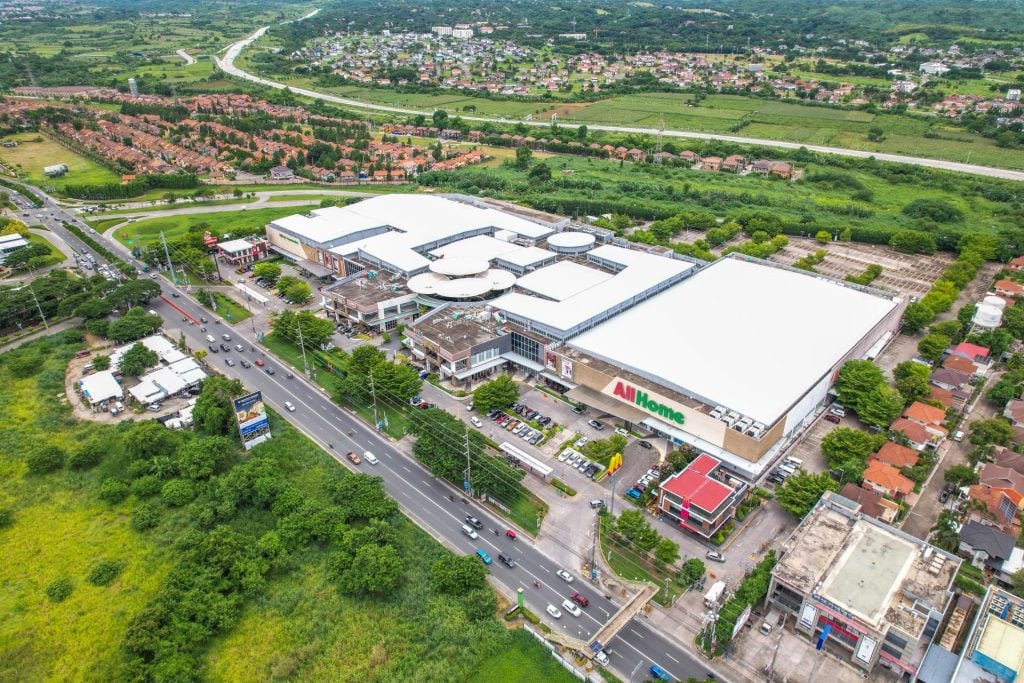
Summer Family Activities in Santa Rosa #3: Museo de Santa Rosa
They say teach children while they are young. If you want to engage your kids with more of history and culture, this is the best place to visit as one of your summer family activities in Santa Rosa. The city’s and the surrounding area’s history and culture are on display at the museum.
Activities:
- Explore the exhibitions: The museum offers a number of exhibits that highlight the history and culture of Santa Rosa. These exhibits include objects, images, and written records.
- Study the local economy: Agriculture, manufacturing, and handicrafts have all played significant roles in Santa Rosa’s history. These industries and how they have impacted the area are the subject of exhibitions in the museum.
- Discover the history of the city: The museum also has displays about the history of the city, including its religious and cultural customs.
- Attend cultural events: The museum presents events in the form of art exhibits, musical performances, and theatrical productions.
- Visit the museum on a guided tour: People can visit the museum to learn more about the exhibits and the history of Santa Rosa.
- Shop at the souvenir store: Buy items relating to the exhibits at the museum store, which sells books, souvenirs, and other goods.
Summer Family Activities in Santa Rosa #4: Brittany Santa Rosa
A master-planned eco-city called Brittany Santa Rosa near Nuvali is an enjoyable place with many summer family activities in Santa Rosa. The development is intended to be a sustainable, connected community that offers a balance between living in the city and the outdoors. You and your kids will love this place because all the activities here know no age!
Activities:
- Take advantage of outdoor recreation opportunities: Visitors can go bicycling, hiking, fishing, and bird-watching.
- Shop and eat: Visitors can shop and eat at many restaurants and retail establishments in the area. The retail stores sell a variety of things, including apparel, housewares, and sporting equipment. Filipino, Asian, and Western cuisines are all available at the eateries.
- Visit the wildlife and bird sanctuary: Visitors can witness a variety of animals and birds in their natural habitat at Santa Rosa’s wildlife and bird sanctuary.
Summer Family Activities in Santa Rosa #5: Vista Mall Santa Rosa
If your kids and other family members love strolling and shopping, this mall is a great place to shop and treat them. Vista Mall has over 40,000 square meters of retail, dining, and entertainment options that are available to guests at the mall.
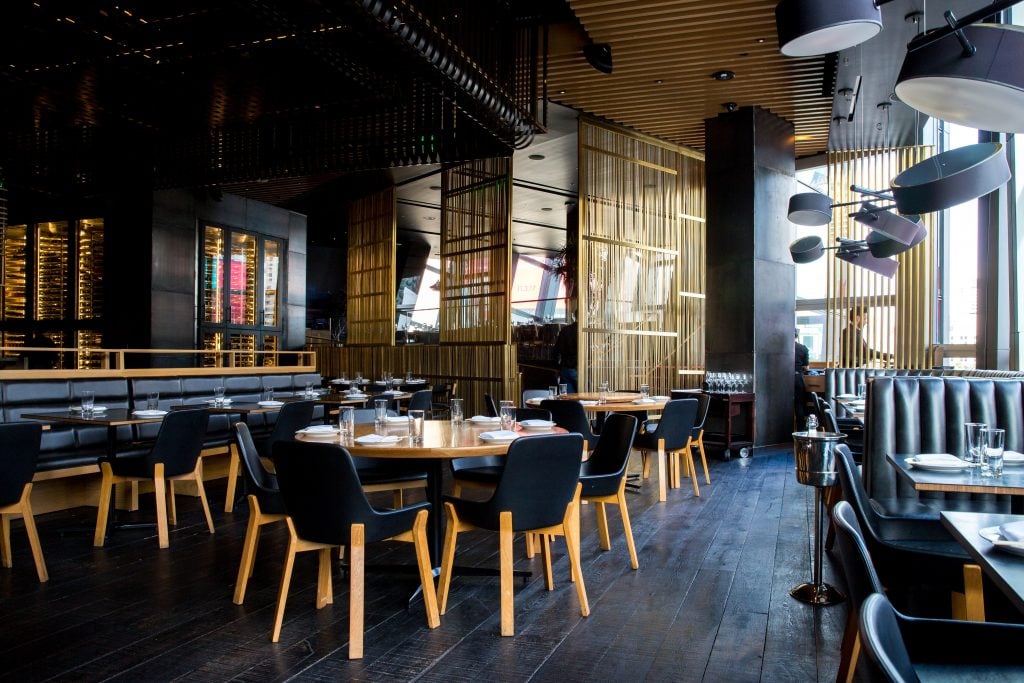
Activities:
- Shop: The mall features more than 200 retail establishments that sell a range of goods, including apparel, accessories, home goods, and electronics.
- Dine: There are several dining options available at Vista Mall Santa Rosa, ranging from quick food to upscale dining. Visitors can also enjoy the cafes and dessert shops that are accessible.
- Watch a movie: The mall offers a theater that features cutting-edge sound and projection equipment and shows the newest blockbusters.
- Play games: The arcade area of the Vista Mall Santa Rosa is open to those who want to play video games and other arcade games.
- Attend events: Throughout the year, the mall holds a number of events, such as concerts, bazaars, and culinary fairs.
- Sit back and unwind: There are a number of places around the mall where customers may take a seat and unwind, including a food court and general lounging areas.
Santa Rosa Laguna: All the Fun and A Great Home
You’ll be in for a treat once you get in Laguna, from the most well-known spots to the less well-known ones. If you ever you had a sepanx to this city and feel like a day trip is insufficient to fully experience the province’s highlights, you may find reasonable places to stay.
You could also start a holiday property investment in this province with Brittany if you want to avoid this bother and make your trip to Laguna more convenient.
Suggested Read: Why Santa Rosa Should Be Your Next Home Address
Suggested Read: These Wellness Spots In Laguna Have Your Back
Suggested Read: Upcoming Developments in Santa Rosa Laguna
Suggested Read: Santa Rosa Real Estate Investment 2022
Suggested Read: Travel Santa Rosa Laguna This 2022
Suggested Read: The Beautiful City of Santa Rosa
When it comes to making investments, there’s always one market that always pops up in every conversation – none other than real estate properties. Whether it be a personal or business investment, real estate has always been one of the top options.
The Real Estate Market in the Philippines
The Philippine real estate market is known to be one of the best markets to invest in – and has continued to prove so during this year as well. Making investments involves a lot of financial resources, so it’s important to make every decision wisely.
If you’re looking to start investing in real estate properties this April, then we’ve got the perfect line-up for you.
The Best Luxury Real Estate Developer in the Philippines: Brittany Corporation
Brittany is an award-winning luxury real estate development company in the Philippines by Vista Land that provides only the finest luxury homes and luxury condominiums. Vista Land is one of the largest project and home developers in the Philippines.
With luxury real estate project developments in different corners of the country, Brittany has gained an unbeatable reputation in the luxury living industry. Listed below are some of the best properties by Brittany that define what peak luxury living is like:

Luxury Real Estate Spotlight in April:The Best Luxury Real Estate Properties in The Philippines
Luxury Real Estate Spotlight April #1: Portofino Alabang
Situated in one of the bustling cities Metro Manila, Portofino is the Italian-themed luxury real estate development project of Brittany in Vista Alabang. This 1500-hectare masterpiece is the flagship development project of the company in Alabang.
It has been planned to provide each homeowner with the most beautiful and comfortable luxury homes paired with world-class services and amenities through its three different enclaves: Portofino Heights, Portofino South, and Amore at Portofino.
Portofino brings together families through its timeless and elegant old-world Italian architecture which gives you a picturesque view everywhere you look from the moment you wake up until you head to bed late at night.
Check out the beautiful Italian homes of Portofino Alabang here.
-
Portofino South
-
Portofino Heights
-
Amore At Portofino
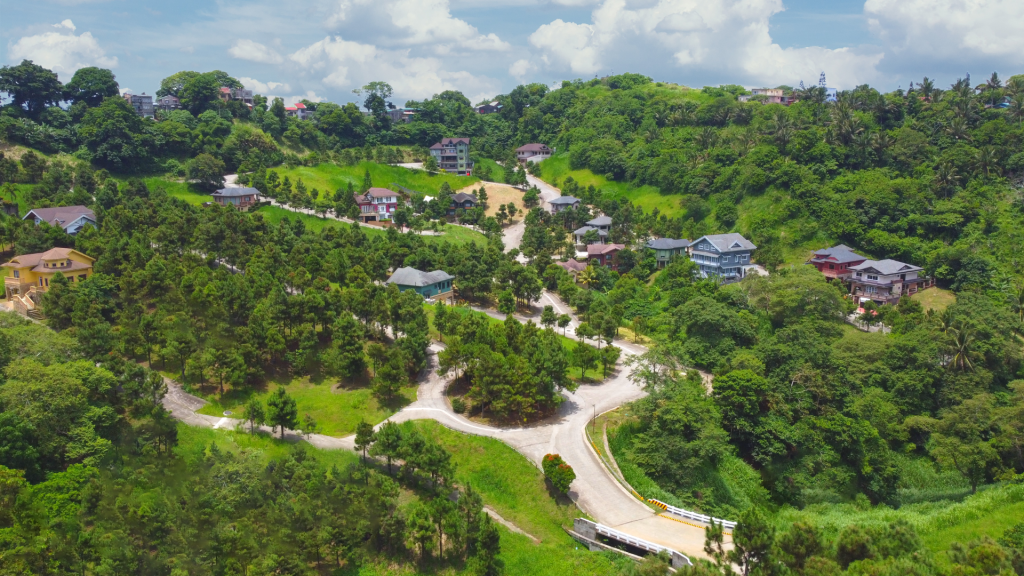
Luxury Real Estate Spotlight April #2: Crosswinds Tagaytay
One of the most famous luxury real estate projects in Tagaytay, anyone who frequents the cool and breathtaking city has definitely heard of Crosswinds.
Offering a wide variety of both luxury house and lot for sale, as well as luxury condominiums, Crosswinds Tagaytay is sure to have the perfect home to suit all your luxury living needs.
Discover the most beautiful Swiss-inspired luxury homes at The Swiss Quadrilles, the luxury condominium units at the Alpine Villas and The Grand Quartier, and the luxury lots at The Terraces of Lausanne here in Crosswinds Tagaytay.
With lush greenery through over 35,000 pine trees, comfort and beauty has never been easier than at Crosswinds Tagaytay. Develop a closer relationship with both nature and your family when you get a home at Crosswinds.
View the luxurious lineup of properties in Crosswinds Tagaytay here.
-
Alpine Villas
-
The Grand Quartier
-
Lausanne At crosswinds

Luxury Real Estate Spotlight April #3: Brittany Sta. Rosa
Located just right next to Metro Manila, experience tranquility with the American homes of Brittany Sta. Rosa.
Surrounded by some of the largest and most famous golf courses in the country, Brittany Sta. Rosa is situated strategically in the heart of Laguna. Known as Laguna’s educational and commercial hub, Sta. Rosa is the most ideal place for residential projects and the like.
With both comfort and convenience, breeze through your everyday life with no hassle at all. When partnered with top-notch services and the most elegant luxury homes, live like royalty here in the homes of Brittany Sta. Rosa.
With greenery at every corner, take a breath of fresh air and enjoy the simple things at Brittany Sta. Rosa.
-
Georgia Club
-
Promenade
-
Augusta
Luxury Real Estate Spotlight April #4: Lakefront Sucat
A mirror of the famed Victorian luxuriousness partnered with unmatched sophistication, these Neo-Victorian luxury homes in Lakefront Sucat are bound to leave you speechless.
The perfect combination of both contemporary and classic charms, these luxury homes modelled after the houses of San Francisco, USA are the definition of simple yet stylish homes.
Built on the serene lands of Sucat, Muntinlupa, Lakefront Sucat is surrounded by commercial establishments that give you convenience without having to cut down on comfort and relaxability.
View the luxury homes of Lakefront Sucat here and find the perfect home for you and your family.
-
La Posada
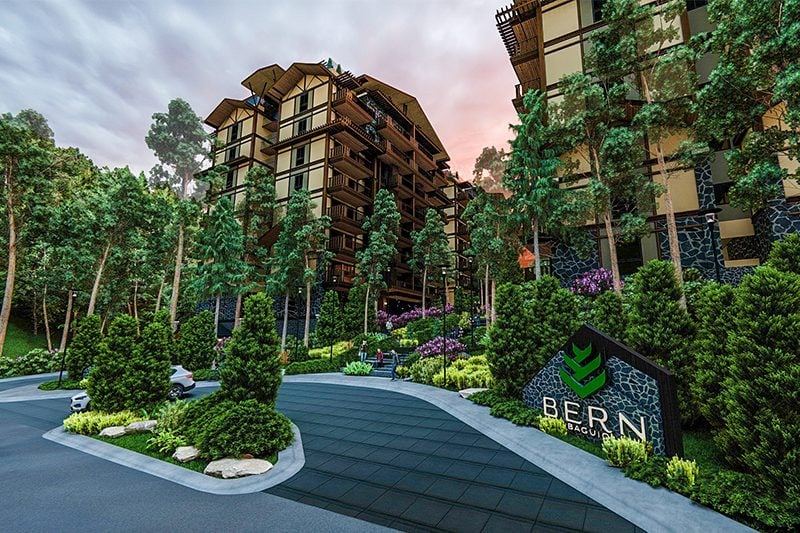
Luxury Real Estate Spotlight April #5: Bern Baguio
Especially during this peak summer season, no other place has been more famous than the famed summer capital of the Philippines – Baguio.
As a project inside the city of pines, enjoy the cool mountaintop weather all-year round here in the luxury condo units of Bern Baguio.
Providing every homeowner with solace at relief, sooth your nerves by viewing the aesthetic scenery of the natural beauty of Baguio City. With pine trees over centuries old, nature has never been more appealing than when partnered with the right atmosphere.
With both class and grandeur, the luxury condominiums in Bern Baguio are the most suitable homes to make the perfect Baguio lifestyle.
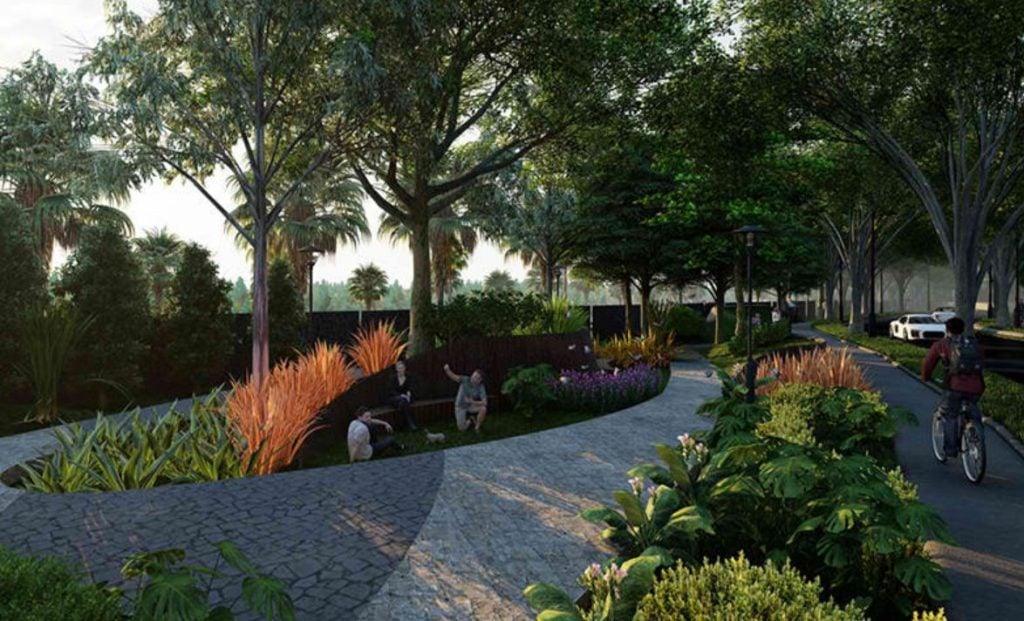
Luxury Real Estate Spotlight April #6: Forresta Villar City
If you’re looking for something even more innovative and generational, Forresta Villar Land is the place for you.
A revolutionary luxury real estate community, Forresta is filled with only the most premium projects in mind. Made with a vision in mind to create a safe and green space for each homeowner, Forresta is the dream that has come to reality.
With pedestrian-friendly designs with parks and open spaces in the area, nature has become even more than just a lifestyle here in Forresta.
Taking a lovely picnic or riding a bike trail is as easy as pie when you’re in Forresta. Wake up every day feeling refreshed and take a morning jog while breathing in the fresh scent of pinecone needles.
The luxurious estate lots of Forresta are more than just an investment in your own home, but also an investment in truly being one with nature.
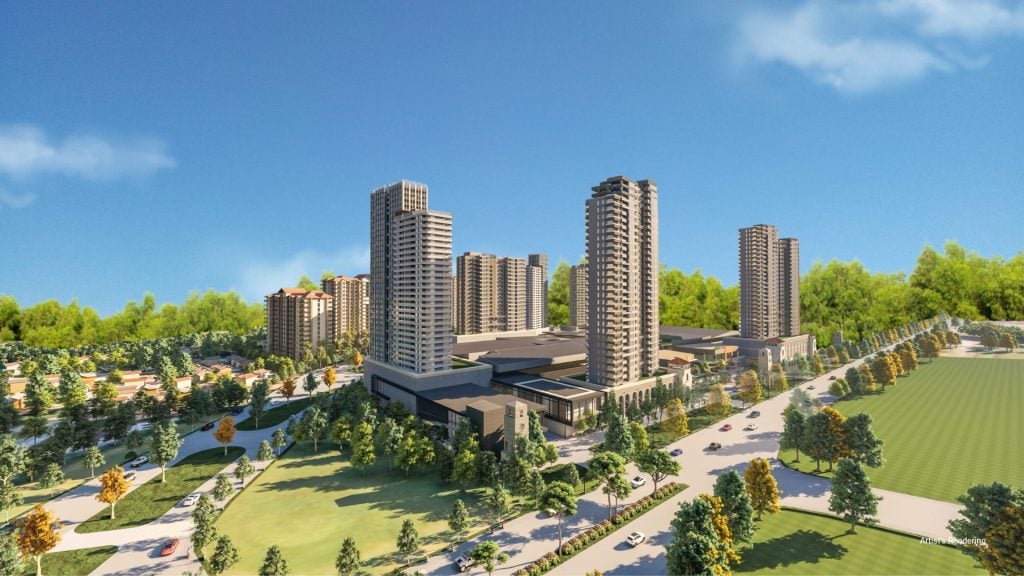
Luxury Real Estate Spotlight April #7: Pontevedra Estate
Presenting Brittany’s most recent luxury real estate development project situated in the heart of Santa Rosa, explore the creative play of both modern and historic luxury in the luxury homes of Pontevedra Estate.
Inspired by the small riverside city of Pontevedra all the way in Spain, get lost in the Mission-style architecture of the project. With plans to make parks, avenues, gardens, and fountains throughout the area, Pontevedra Estate is the place to be for your Spanish dreams.
A most promising luxury real estate development project of Brittany by Vista Land, Pontefedra Estate is bound to be a trustworthy investment in the real estate market.
The Country’s Most Trusted Real Estate Developers
At the end of the day, it all boils down to the homeowner’s personal preference in choosing the next residential projects they’d want to consider their new home.
Regardless, Brittany has continuously served its homeowners with utmost class and luxury that never fails to exceed expectations. If you’re still having doubts on which properties to invest in, you can’t go wrong with choosing Brittany.
The Prime Definition of Luxury Living
With several luxury residential projects in various places throughout the country, whether it be a luxury house and lot or luxury condominium, Brittany is sure to house your ideal home.
Luxury living has never been easier than with the properties of Brittany.
Suggested Read: April Showers Bring May Flowers: Landscaping Design Tips
Suggested Read: Brittany Tops Off Alpine Villas’ First Building
Suggested Read: Brittany Spotlight: World Class Women
Suggested Read: A Glimpse Of Brittany Spotlight
When summer season starts to roll in, there’s one place in the country that immediately pops to the minds of Filipinos – none other than the Summer Capital of the Philippines, Baguio City.
Baguio City: The Summer Capital of the Philippines
Standing at an astounding 1,500 meters above sea level, Baguio city is known across the country for its cool mountain weather. With pine trees at every corner, it has also gained the title “The City of Pines”.
With temperatures reaching up to 48°C these days, Baguio is definitely the place to be during this year’s hot and dry season. Get your travel and summer getaway bags ready and head on to the best tourist spot of the country this season!

The Best Activities to Do in the City
There are many fun and adventurous activities that you can enjoy in the summer capital of the Philippines. The city is home to recreational parks like the internationally known tourist spot, Burnham Park.
At recreational parks like Burnham, you can enjoy various activities like roller skating, go-karting, or biking. You can also enjoy wonderful scenery because of Baguio’s unique geographical features or delve more into the culture and visit Baguio Museum.
And when it finally reaches nighttime, you can still enjoy a walk at Baguio’s most famous street – Session Road. While it may already be bustling with many artists, cosplayers, and musicians at daytime – it doesn’t get any less lively at night.
Bagui City is a boundless recreational tourist attraction.
There are many things that you can do when in the City of Pines. The list just goes on and on, which is why it is important to take a break at times from all the exciting yet also somewhat tiring activities that the city offers. Luckily, even relaxation can be an enjoyable activity in Baguio!
The Most Famous Yoga and Spa in Baguio City
Going to the spa is one of the best ways to rest, relax, and treat yourself. A massage and beauty treatment may not seem like something you’d be getting in the heart of Baguio City, but we assure you that it’s worth making the extra visit.
If you’re looking for an unconventional activity the next time you’re in Baguio, you need to check out these amazing massage spa and yoga studios in Baguio:
Nuat Thai Foot & Body Massage
Perhaps a common sight for Filipinos, Nuat Thai is a staple name in the Foot and Body Massage Industry. With branches all over the country, everyone has seen or heard of the massage chain before.
Of course, Nuat Thai wouldn’t be as successful as it is now if did not have superb quality and services. The Nuat Thai branch in Baguio is one of the exceptional branches in the country. With customer service, mastery & skill highly praised by its customers, you can’t go wrong with choosing Nuat Thai when in Baguio.
Just a 12-minute walk from Session Road, this branch is located at Leonard Wood Road, Baguio City. You can also contact them at 0917 887 8345 for reservations to ensure that you won’t miss this trip in your Baguio itinerary.
North Haven Spa
Famous for its breathtaking view of the city’s pine trees, this wooden bamboo themed spa is a local pride. Located strategically in the heart of Session Road, North Haven Spa can be found in Casa Vallejo – making it the most accessible spa in our list.
The dim-lit rooms paired with relaxing background music makes the perfect atmosphere for someone looking to spend their time with utmost comfort and relaxation.
Since it’s situated in the bustling street of Session Road, we recommend that you contact them beforehand rather than hoping to get a slot for walk-ins. You can contact North Haven Spa at 0917 508 1349 or through their Facebook page of the same name.
HANDS Aesthetic
As opposed to the previous spa’s accessibility, our next one on the list can be quite a stretch from your usual spots in Baguio. However, we assure you that taking the extra steps and effort is worth it at HANDS Aesthetic.
Home to the best amenities in Bgauio, HANDS Aesthetic is completely equipped with all your treatment and relaxation needs. From driveway parking all the way to the heated beds during your session, you won’t feel stressed at all from start to finish.
HANDS Aesthetic is located all the way in Lourdes Subdivision, and you can make reservations by contacting them at 0908 263 1371.
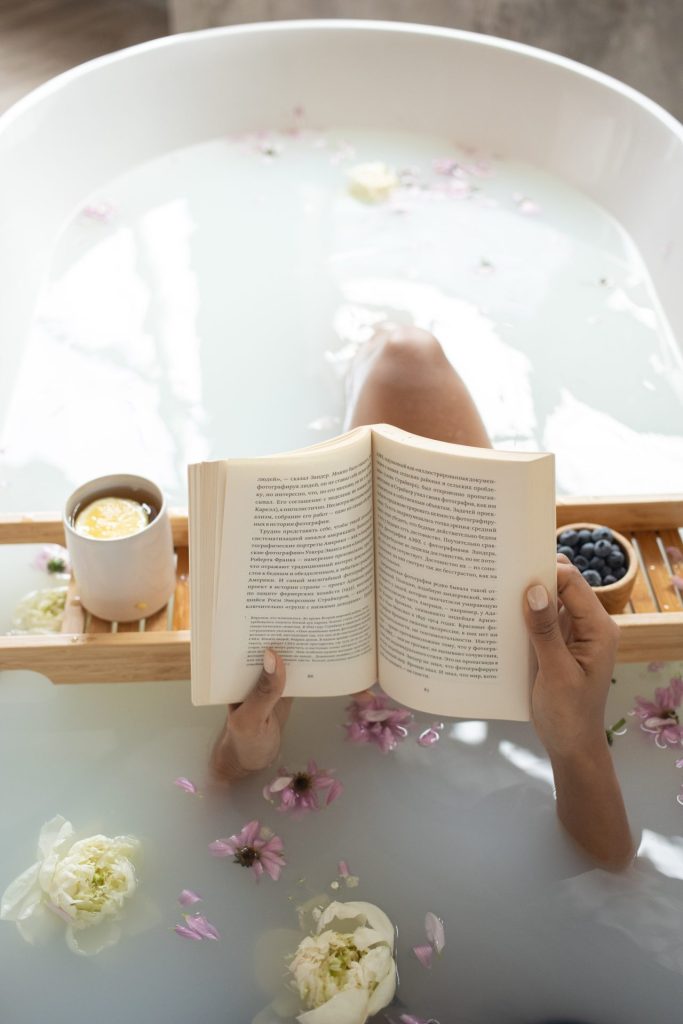
Nagomi Wellness Spa
Looking for something other than your usual professional massage and facial services? Nagomi Wellness Spa is the perfect place for your adventurous spa exploits.
Nagomi Wellness Spa offers cupping therapy and aesthetic consultations for plastic surgery and acupuncture in addition to its quality Thai massage therapies. The place is adorned with Japanese themes to give you that cozy and homey feeling.
The spa is located at Kisad Road, Baguio City. You may contact them at 0945 601 4359 or 0947 921 5131 for any inquiries or reservations.
Flycatchers Yoga Studio
Perhaps the best yoga studio in the area, Flycatchers Yoga Studio is the most recommended go-to place in Baguio if you wanna kick up your yoga and pilates up a notch.
With instructors that have honed their skills with such mastery, you can rest assured that you’re in good hands at Flycatchers Yoga Studios. Flycatchers is also known for partnering with different organizations and preparing various events and programs to give everyone a chance to experience what quality yoga entails.
Located right in the center of the busy street of Session Road, you won’t have a hard time accessing this studio – and if you’re in luck, you might even be able to join one of their events!
Other notable Spa in Baguio
There are many other amazing spa in Baguio worth mentioning, and it’s best to try out the different spa in the area for you to figure which massage technique works best for you after a tiring day of going around the active City of Pines.
-
Baguio Castle Spa
-
PrettyMe Wellness Clinic and Spa
-
Jade Wellness and Beauty Center
-
Once Upon A Time SPA & CAFE
-
Beauty Planet Skin Solutions Clinic & Spa
-
Dab n Rub Massage and Spa
-
VIP Prestiz
-
Terramoré
After spending quite some time in Baguio, you realize that there really is no end to all the fun and relaxing activities you can do in the area. Why limit yourself to taking short vacation trips when you can stay all-year round?
If you’re beginning to think of staying in Baguio as a resident, then seeing these lovely homes from Brittany will make you reach a decision much faster than you’d expect.
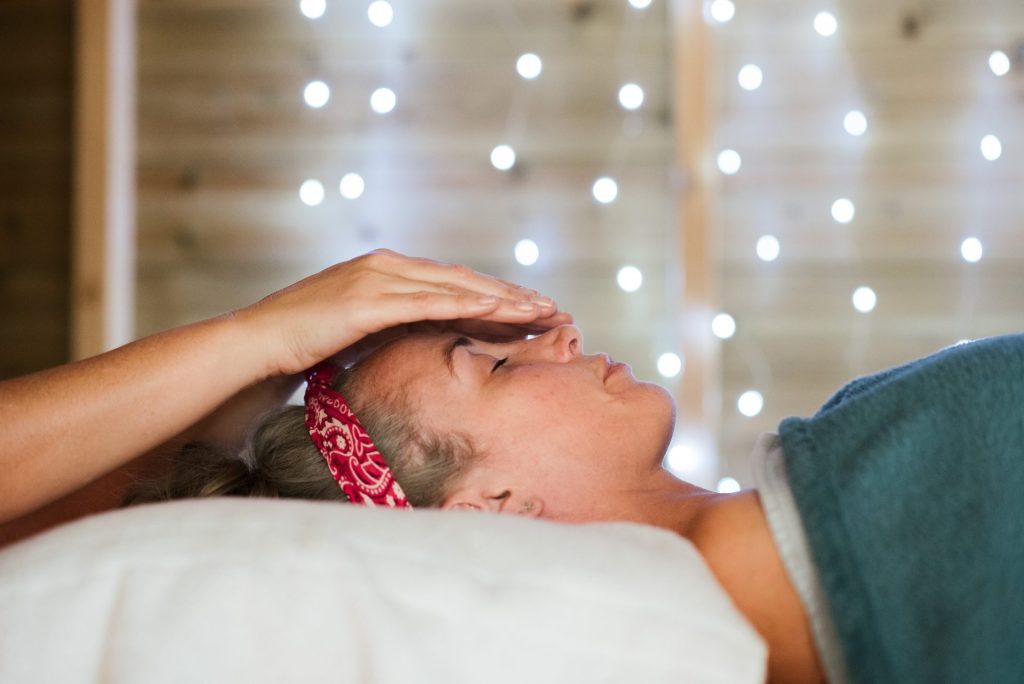
The Most Relaxing Homes in the City of Pines: Bern Baguio
The pinnacle of luxury living in the Summer Capital of the Philippines, Bern Baguio is the definition of utmost comfort, solace, and relaxation. With nature surrounding you in ever corner, this Swiss-inspired luxury condominium in Baguio is sure to give you a new life you’ve only once dreamed of.
The alpine elements of this luxury condo in Baguio’s exterior is partnered with soft Cordillera inspired interior design elements. Partnered with only world-class amenities, luxury living has never been more satisfying.
With units still available in this luxury condominium for sale, you can’t go wrong with investing in Bern Baguio. A lifestyle filled with class and splendor awaits you here in Bern Baguio.
Suggested Read: Transform That Extra Room Into A Home Spa
Suggested Read: The Best Spa And Wellness Options In Boracay
Suggested Read: International Yoga Day: Celebrate At Home
Suggested Read: Yoga Quotes To Inspire Your Inner Soul
Suggested Read: A Complete Guide To Outdoor Yoga
A two-hour drive from Manila, Tagaytay is simply one of the best summer destinations in the Philippines. And when we think of Tagaytay, we associate it with the breathtaking view of Taal Lake. And what’s now to love about Tagaytay if we don’t dine at some of the famous restaurants here? Pretty sure you’ve heard of Bag of Beans, Picnic Grove, and Sky Ranch – but there are other places you may want to check out for a change!
Here are some of the best Tagaytay tourist spots!
Places to Visit in Tagaytay
The first thing tourists want to see in Tagaytay is to see the view of the Taal Lake. With all of these tourist spots, you will surely get a glimpse of its majestic beauty, where you can also have fun with friends and family with these cool activities you can do together! Tagaytay is truly a dream destination for many.
Places To Visit In Tagaytay #1: Sky Ranch
Make sure to include Sky Ranch in your top things to do in Tagaytay! This amusement park has a wide range of rides and attractions suitable for all ages and can be easily incorporated into a day trip to Tagaytay.
For an awe-inspiring vista of the city and Taal Lake and Volcano, don’t miss the chance to ride the Sky Eye of Sky Ranch Tagaytay, which happens to be one of the tallest Ferris wheels in the entire country.
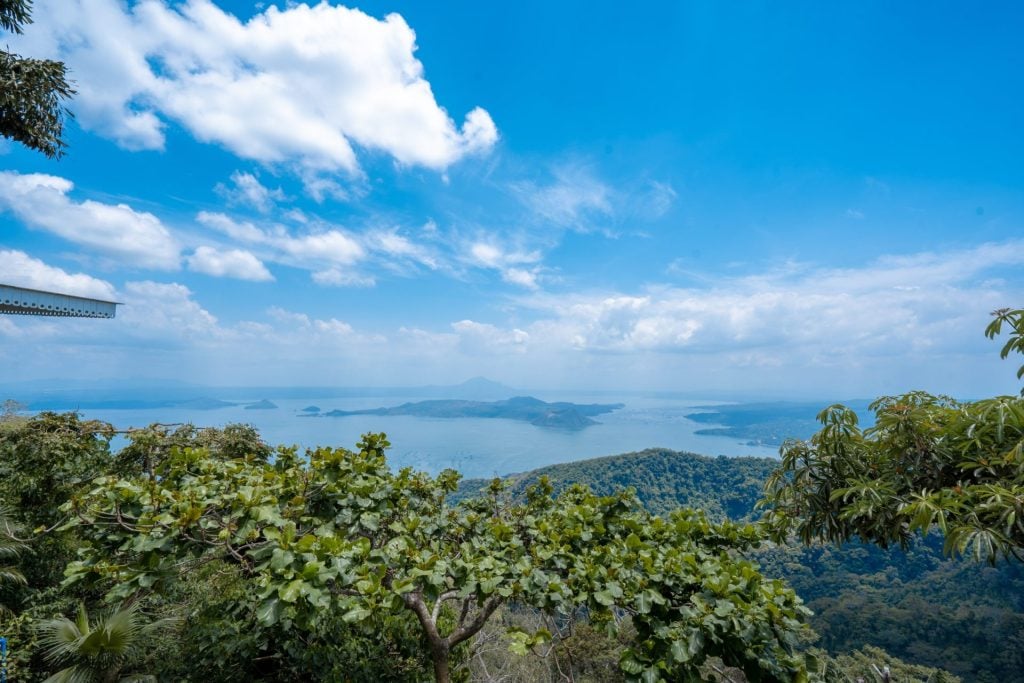
Places To Visit In Tagaytay #2: Tagaytay Picnic Grove
If you’re short on time and traveling with a large group, hanging out at Tagaytay Picnic Grove is one of the best things to do in Tagaytay. Whether you prefer to bring your own food or have a BBQ with friends and family, this picturesque park offers the ideal setting. Rent a table, gazebo, or hut, or bring your own grill and portable burner to cook up a storm. With breathtaking views of Taal Lake and numerous shaded areas under the trees, you’ll find the perfect spot to unwind and relax.
Prepare for an exhilarating day of adventure with a variety of exciting activities like eco-trails, horseback riding, zipline, and cable rides. The Tagaytay Picnic Grove complex also boasts a brand-new observation deck, as well as newly constructed business spaces and a plethora of souvenir shops and food stalls.
While some facilities are still undergoing upgrades and renovations due to the 2020 Taal eruption, the park has undergone significant improvements, making it the ultimate destination for a fun-filled day out in the refreshing Tagaytay climate. Additionally, the updated entrance fee of 50 Php per person and 35 Php for parking.
Places To Visit In Tagaytay #3: Nurture Wellness Village
Since its inception as a spa in 2001, Nurture Wellness Village has evolved into a sprawling garden paradise that offers a comprehensive range of services for relaxation, revitalization, and festivities. Immerse yourself in the lush greenery and authentic Filipino experiences, from snug lodgings to distinctive Ifugao huts and locally-inspired adornments.
Revel in invigorating spa therapies steeped in Filipino heritage and satisfy your palate with delectable Filipino fusion fare at The Farmer’s Table. Nurture Wellness Village is not just a spa; it’s a sanctuary of well-being that caters to weddings, corporate events, and team-building activities.
Places To Visit In Tagaytay #4: People’s Park in the Sky
People’s Park in the Sky, formerly known as the Palace in the Sky, is a remarkable urban park you shouldn’t miss on your visit to Tagaytay. Situated atop Mount Sungay, the panoramic views from the summit are truly stunning.
Legend has it that the mansion was originally commissioned by former First Lady Imelda Marcos, during her husband’s presidency, to serve as accommodation for former US President Ronald Reagan’s scheduled visit to the Philippines. However, due to unforeseen circumstances, the visit was canceled, and construction of the mansion was subsequently halted. Today, the incomplete structure’s remains, including the scaffolding and road network, have been repurposed and are open to the public to explore and appreciate.

Places To Visit In Tagaytay #5: Paradizoo
In addition to its animal attractions, Paradizoo also has a wide variety of gardens that showcase various plants and flowers. You’ll be able to stroll through the Butterfly Garden, the Bonsai Garden, the Eclectic Garden, and the Flower Garden, among others. These gardens provide a peaceful and picturesque setting for visitors to enjoy and take photos.
Paradizoo also offers various educational programs for both kids and adults. These programs focus on topics such as animal care, plant cultivation, and environmental conservation. They are designed to teach visitors about the importance of sustainability and how to care for the environment.
One of the unique features of Paradizoo is its community program. This program allows visitors to participate in farming activities such as planting and harvesting crops, as well as feeding and caring for the animals. This is a great opportunity for visitors to experience farm life firsthand and learn about the hard work that goes into farming.
Overall, Paradizoo is a must-visit destination for anyone looking for a fun and educational day out in nature. It’s a great place to relax and connect with animals and the environment, while also learning about sustainability and the importance of conservation.
Places To Visit In Tagaytay #6: Puzzle Mansion
If you’re a fan of jigsaw puzzles, you won’t want to miss visiting The Puzzle Mansion, another impressive mansion worth seeing. This museum boasts one of the largest assortments of completed puzzles worldwide and even secured a Guinness World Record for its owner, puzzle collector Georgina Gil-Lacuna, in 2012. The museum’s vast collection includes an array of 2D and 3D puzzles in various shapes, sizes, materials, and themes. You can’t miss the reproduction puzzles of celebrated artists like Picasso, Degas, and Gaudi, which are absolutely dazzling.
Places To Visit In Tagaytay #7: Museo Orlina
Museo Orlina, which is named after the celebrated glass sculptor Ramon Orlina, is one of the most exquisite destinations to immerse oneself in a lot of stunning glass sculptures and commissioned works of art. It displays replicas of commissioned artwork and provides a platform for other artists to showcase their works.
Featuring an impressive collection of artworks produced by both local and foreign artists, the museum’s primary goal is to exhibit paintings, sculptures, and other works of art created using various media.
Places To Visit In Tagaytay #8: Sonya’s Garden
If you’re looking for a destination that offers more than just events, Sonya’s Garden is a must-visit, particularly if you’re interested in their delightful breakfast and pastry menu. Indulge in their mouth-watering seafood sampler and rib-eye steak while enjoying the lush natural surroundings at their outdoor dining area.
And if you want to fully immerse yourself in nature’s luxury, we suggest taking a stroll through their picturesque gardens after your meal, taking plenty of photos for your Instagram feed while you’re at it. So if you’re planning a trip to Tagaytay, be sure to add Sonya’s Garden to your list of must-visit places!
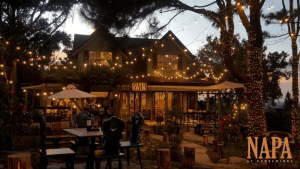
Places To Visit In Tagaytay #9: Antonio’s
Going to Tagaytay City means one of the top things to do is to get your tummy full with all the scrumptious food! If you are looking for an exceptional dining experience for a special occasion, Antonio’s Garden in Tagaytay, Philippines should be at the top of your list. This Spanish colonial-style mansion, situated on a hillside estate, has gained a reputation for serving mouthwatering food and providing outstanding service.
In 2015, it was the only Philippine restaurant to make it onto the highly-regarded San Pellegrino Asia’s 50 Best Restaurant Awards, thanks in part to its succulent Lechon de Leche dish that helped secure the coveted prize.
At Antonio’s Garden, you can expect to savor organic dishes and beautifully presented plates that will tantalize your taste buds. If you’re willing to splurge on a sumptuous meal in a chic ambiance, go ahead and book a reservation today.
Places To Visit In Tagaytay #10: Tierra de Maria
Visiting Tierra de Maria is undoubtedly one of the most popular and fulfilling activities you can do in the area. As soon as you step inside the premises, you’ll feel a sense of serenity, with numerous signs reminding visitors to maintain silence and a towering 50-foot statue of Mother Mary with her arms wide open welcoming you to enter into a prayerful state of mind.
In addition, the panoramic deck offers a breathtaking view that adds to the spiritual experience. After your visit, you’ll leave feeling spiritually rejuvenated and refreshed. Overall, Tierra de Maria is one of the most popular and fulfilling attractions in the area that you should definitely check out.
Places To Visit In Tagaytay #11: Bag of Beans
From its humble beginnings as a rustic hole-in-the-wall café along Aguinaldo Highway, Bag of Beans has become synonymous with the chilly city of Tagaytay. The cafe’s popularity has grown so much that it has now opened several branches around the city, each one as beautifully designed as the last.
Bag of Beans, along with its other Tagaytay restaurants, has also significantly expanded its menu, offering hearty breakfast, lunch, and dinner options. With a variety of dishes to choose from, you can enjoy a satisfying meal any time of the day at any of Bag of Beans’ branches in Tagaytay.
Enjoy the Tagaytay Breeze with Brittany Corporation’s Luxury Homes
What better way to enjoy all that Tagaytay has to offer than from the comfort of a luxury home? Brittany Corporation’s exclusive residential developments in Tagaytay offer the perfect blend of comfort, sophistication, and natural beauty. Imagine waking up to stunning views of the Taal Volcano, enjoying the cool breeze from your balcony, and indulging in the finest amenities and facilities that Tagaytay has to offer.
So why not take the first step towards your dream lifestyle in Tagaytay? Contact Brittany Corporation today and discover your perfect luxury home in this picturesque city. Enjoy the Tagaytay breeze with Brittany Corporation’s luxury homes.
Visit our LinkedIn and Youtube accounts to check the latest updates about our Brittany Homes.
Suggested Read: Experience The Beauty Of Sunsets In Crosswinds Tagaytay
Suggested Read: Most Instagrammable Spots In Tagaytay
Suggested Read: Cognitive Benefits Of Playing Puzzle Games
Suggested Read: Mental Exercises To Maintain Sharpness
Suggested Read: Luxury Living In Tagaytay
Making money or quickly becoming rich in real estate is impossible, but you can steadily and consistently increase your wealth through proper investment. Real estate is widely recognized as one of the most effective ways to accumulate wealth, but achieving profitability and financial success in this field necessitates sound guidance, methods, and perseverance.
Although investing in real estate is a tried and tested method of earning money, it also entails inherent risks like any other business. If done correctly and educated enough on the processes and strategies, real estate can be an excellent tool for wealth accumulation. Read more about the ways how to become rich through luxury real estate.
Establish Your Financial Goals
Before anything else, you need to know your definition of “being rich.” There are different interpretations of being rich, so you have to set your own financial goals and outline your plan on how to get rich on your terms. Here are some questions you can ask yourself:
- Have you thought about when you want to retire?
- What major purchases are you dreaming of?
- Do you want to start a family?
- Do you need to save for a child’s education?
- What are your retirement plans? Will you downsize, travel, or buy vacation homes on both coasts?
- What kind of legacy do you hope to leave behind for your loved ones?
Take your time and answer these questions, as these can help you establish your set of financial goals and decide how much money you need to save.
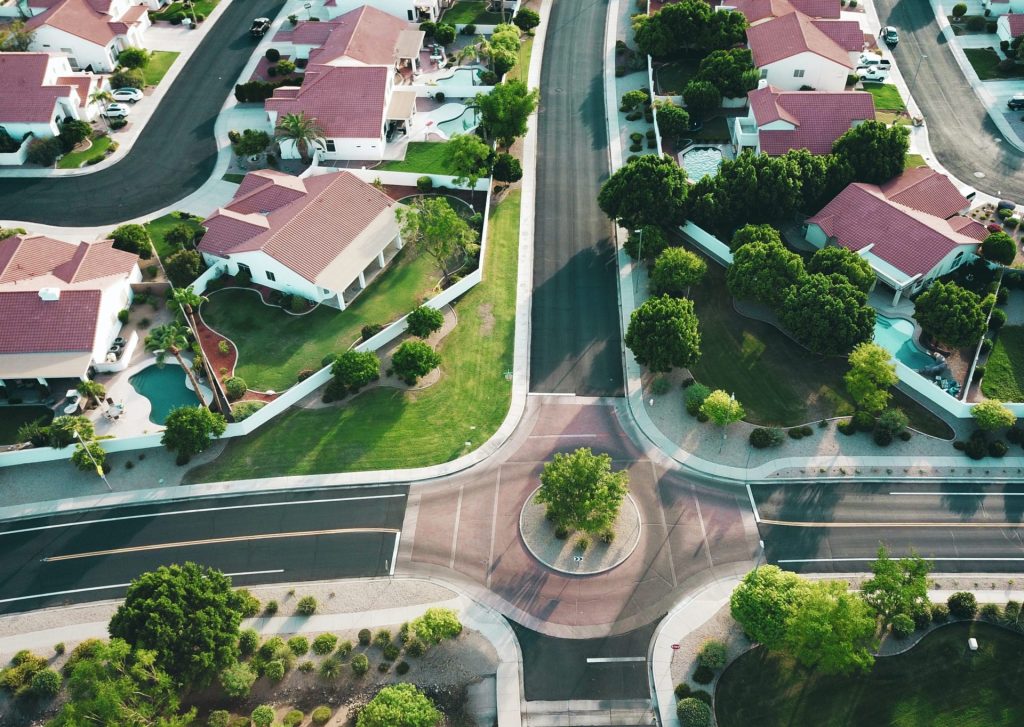
How to Become Rich
If you want to make the most of your investment, add real estate to your investment portfolio. This will help you diversify your portfolio of investments. But when it comes to real estate, you need to know various options for getting rich or building wealth.
How To Become Rich Tip #1: Destroy Your Debt
The most important step in becoming rich is to end your high-interest debt. A high-interest debt, such as credit card debt, can affect your credit score and it can be challenging to pay back.
Take control of your debt by listing all your loans starting from the highest interest rate to the lowest. You can also make extra payments toward the original loan amount first. To ensure this, it’s best to communicate this to your lender and ask if there are any specific procedures you should follow when using this strategy.
How To Become Rich Tip #2: Spend Below Your Means
To build and maintain wealth, it’s crucial to earn more than you spend. By living on only 70% to 80% of your income, you’ll have more money in your pocket to save and invest, in addition to creating a cushion for unexpected expenses. Spending intentionally and minimizing high-interest debt are two key ways to help you achieve this.
When you’re mindful of what you spend in your day-to-day life, you might find that you’re able to reduce unnecessary expenses and be able to allocate more funds toward your long-term financial goals. Additionally, by reducing or eliminating high-interest debt, you can avoid paying more money in interest charges and be able to keep more of your hard-earned money.
It’s important to remember that financial success doesn’t happen overnight. However, by following these tips and being disciplined with your spending, you might be able to see the benefits of these strategies over time. Ultimately, being mindful of your finances and prioritizing smart money management can help you achieve your financial goals and build a strong financial future.
How To Become Rich Tip #3: Rent Your Property
The classic or the easiest way to make money in real estate is to rent your property. This type of investment makes you more money by leveraging long-term buy-and-hold residential rentals as people always look for a place to live.

You can own commercial, residential, or industrial real estate properties, or buy land, build a home, and rent it out. While this may be ideal if you want to earn a passive income, there may be a downside to it. A possible disadvantage of this approach is that you’re putting all your eggs in a few baskets. So, in case there are issues with your property, the rental income from it may suffer as tenants need to leave or the repair costs may take up much of your income.
Another tip when renting a property, such as an apartment, is to know the rules for evicting tenants and raising rental rates. Understand the National Building Code, the community norms, and cost-effective upgrades to know how much money you will need to shell out.
How To Become Rich Tip #4: Develop Your Property
Buying, developing, and selling property is another great way to earn money and accumulate capital in the long run.
For example, if you borrow ₱10,000,000 and contribute ₱2,500,000 of your own funds to purchase a property worth ₱12,500,000, you can improve and sell the property for ₱20,000,000. The property’s value has increased by 60%, and your initial ₱2,500,000 has quadrupled to ₱10,000,000.
When you jump into the property market, it might be a bit risky because of the booms and busts. You have to be mindful of this, but if you’re in it for the long haul, it’s a solid way in building wealth.
How To Become Rich Tip #5: Take Advantage of Real Estate Appreciation
When the value of a property increases, we call it “appreciation.” Real estate prices in the Philippines have appreciated by an average of 6.5% by September 2022. This means that if you invest in a property today, you may be able to sell it at a higher price in the future.
While relying solely on appreciation is not likely to make you a millionaire, you can increase the value of your investment through forced appreciation by upgrading and renovating your property.
How To Become Rich Tip #6: Make Money Through Real Estate Investment Trusts
Another way to get rich is through Real Estate Investment Trusts or REITs. In this type of trust, you can invest in real estate without the need to buy or manage a property. REITs may be invested in mortgages, properties, or both. REITs are publicly listed, so you can buy and sell shares on the open market. This can help you diversify your investments and make your money more liquid.
The value of REITs depends on the real estate market, and not the stock market. That’s why the Securities and Exchange Commission recommends investing in publicly-traded REITs as they are liquid like stocks and bonds.
One of the reasons why REITs stand out is because of their regular payment of dividends. And clearly, this is one good way how to get rich in real estate.
How To Become Rich Tip #7: Refinance Your Mortgage
Refinancing your mortgage is a viable option that can help you save money and possibly get rich. By refinancing, you have the opportunity to obtain a loan at a lower interest rate and reduce your monthly mortgage payment. This allows you to keep a larger portion of your income and potentially use it for other ways to get rich, such as investing.
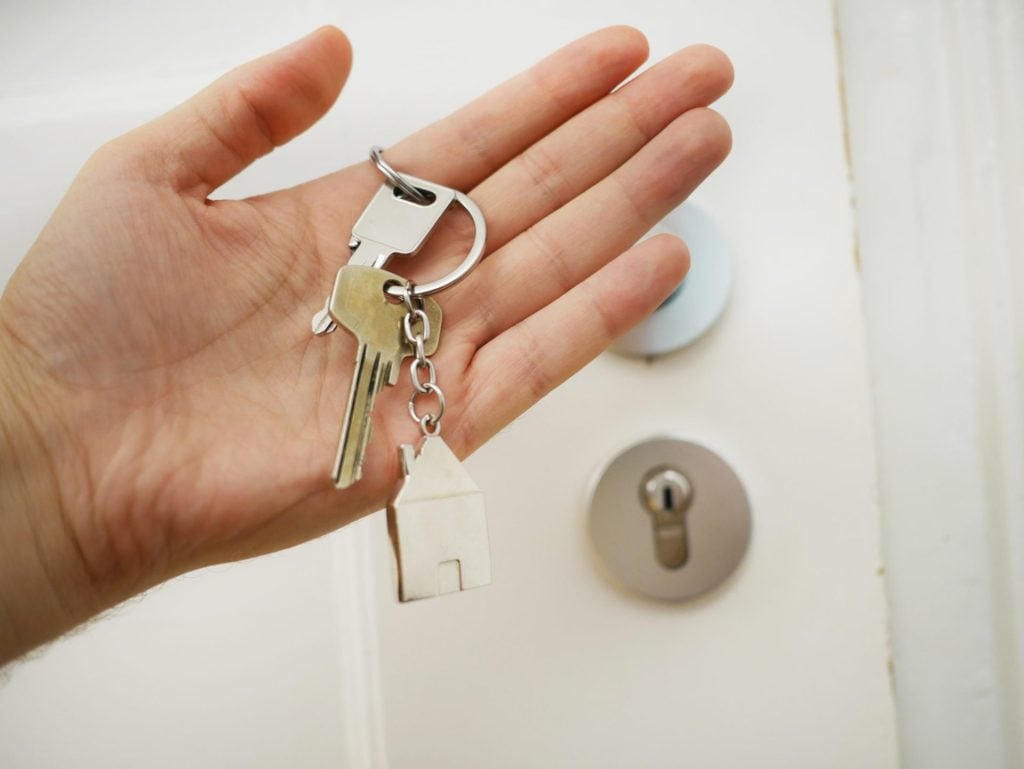
One of the benefits of refinancing is that you can get access to fresh money at lower interest rates, which can help you save a significant amount of money over time.
Additionally, you can take advantage of the decrease in interest rates by replacing your existing loan with a shorter loan term and no change in the payment amount. You don’t need to be wealthy to consider refinancing your mortgage; if you’re a homeowner, it’s a smart financial move that can save you a lot of money in the long run.
Is Real Estate the Best Way How to Get Rich?
If you want to make a lot of money, investing in real estate can be a great option as long as you purchase properties with good fundamentals. Unlike other businesses where banks reject around half of all loan applications, banks are often willing to lend money for real estate investments. Additionally, real estate typically appreciates at a rate higher than inflation, with average property appreciation rates of 3 to 5 percent per year over the past thirty years.
Owning high-quality real estate typically ensures that its value will remain stable, and it may even increase over time unless the surrounding area becomes unappealing. As long as you’re not forced to sell quickly, you should be able to recoup your initial investment.
Make Use of Brittany Corporation’s Luxury Real Estate
Investing in real estate can be a great way to build wealth and secure your financial future. With the right knowledge and strategy, you can make smart investments that will pay off in the long run. At Brittany Corporation, we offer luxury real estate options that are built to last and provide a high return on investment. Our properties are located in prime areas with good fundamentals that make them great investments.
Visit our Youtube and LinkedIn for more details.
Suggested Read: For Better Or Worse: Financial Questions To Ask Your Partner
Suggested Read: The Best Investments For Young Adults
Suggested Read: OFW Parents Pre-Retirement Goals
Suggested Read: Santa Rosa Land Appreciation 2022
Suggested Read: 9 Factors Affecting Value Appreciation
During the pandemic’s peak, the housing market saw a disruption of the usual seasonal patterns, with high demand making any time a good time to sell. However, as the market stabilizes, timing has regained its importance for home sellers.
Traditionally, late spring and early summer have been considered the optimal time to sell, as per a 2022 report by ATTOM Data Solutions, which states that sellers can expect to make thousands of dollars more by selling during the peak months of May, June, and July, compared to the slowest months of October and December.
When is the Best Time to Sell a House?
If you plan on selling your home, ATTOM says that it is during the summer season the best time to sell your home in the Philippines, specifically in the month of May.
Summer is also a good time in selling a home because who would want to walk on a rainy day looking for their next home? House searching is convenient in the summer!
Summer Real Estate Selling Tips
As a seller, you need to take note of a few ideas for selling your home on the market. Here are summer home-selling tips you should know:
Summer Real Estate Selling Tips #1: Prepare the Home’s Exterior for the Summer
The exterior is one of the most important areas a seller must focus on when selling a home in the summer. A neglected exterior may take longer to sell and is more likely to be sold for less than it should.
To enhance the exterior and curb appeal of a home for a summer sale, several steps can be taken, including:
- Mowing the lawn to maintain a neat and tidy appearance.
- Watering the lawn to prevent a burnt look and keep it lush and green.
- Trimming bushes and shrubs to maintain their shape and size.
- Watering plants and flowers to prevent wilting and keeping them looking fresh.
- Weeding and mulching flower beds to keep them looking tidy and well-maintained.
- Touching up any peeling paint on the exterior of the home to make it look well-cared for.
- Cleaning and/or painting the front door to make it look inviting and attractive.
- Sealing the driveway to keep it looking new and to prevent damage from weather and wear.
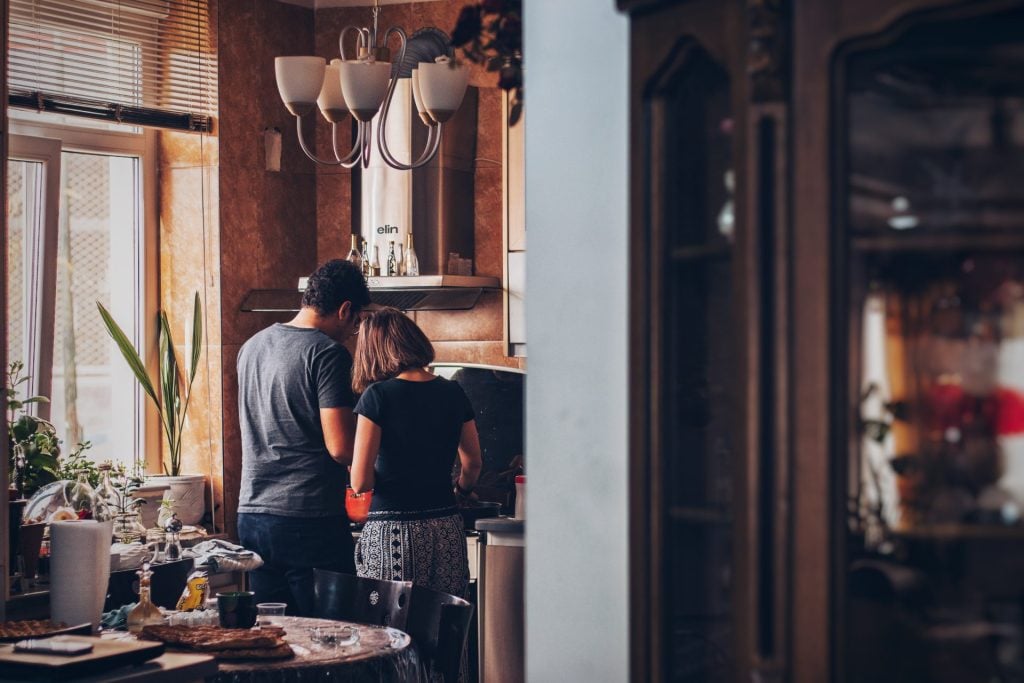
Summer Real Estate Selling Tips #2: Highlight the Outdoor Living Space
When it comes to selling a home during the summer, don’t forget to spruce up the outdoor living space! Since summer is often a short season in many areas, buyers tend to make the most of it by spending time outside. So, having a killer outdoor area can really impress potential buyers.
Make sure to showcase your outdoor space in a way that helps buyers envision themselves relaxing and having fun outside. If you’ve got a great BBQ area or a spacious patio, show it off! Highlighting how awesome your home is for entertaining guests can get buyers excited and eager to make an offer.
Summer Real Estate Selling Tips #3: Check What Needs to be Repaired in the Home First
Potential buyers are easily turned off if they see any problems in the home. For instance, if a home has an old roof with visible damage, the homeowner will lose a fair amount of money from the sale.
One of the most valuable tips for selling your home is to make necessary repairs before listing your home for sale. If you complete your repairs to your property before listing it for sale, you will not only end up with a higher sale but also lessen the chances that your buyer will ask for repairs.
Some examples of necessary repairs include damaged siding, damaged roofs, and broken windows. Make sure that your home is free from any damages so the buyer can focus on all the positives of your home.
Summer Real Estate Selling Tips #4: Keep Your Home Cool
Summer is the hottest season of the year, and what way for a homeowner to be relaxed other than keeping the home cool? It is a plus if your home has a central air conditioning unit, otherwise, it’s still essential to keep your home cool.
Other ways to keep your home cool are to install window air conditioners, turn on ceiling fans, keep the lights off, and have blinds drawn. But if your home has a central AC, make sure that it is working well.
Summer Real Estate Selling Tips #5: Declutter Your Home
Having personal belongings like family photos or children’s report cards on display can be a distraction for potential buyers when viewing a home. Some buyers may be more interested in the owner’s family than the actual features of the home, and it could affect their decision-making process. So, depersonalizing a home is not only a great way to avoid distracting buyers, but it’s also a safety tip to follow when selling a home.
Decluttering is highly recommended when selling a home, regardless of the season. When preparing a home for sale during the summer, it’s a good idea to evaluate your belongings and determine what you actually need to live comfortably while selling your home. If you can do without some items, consider moving them into storage, the basement, or the garage. Decluttering is an excellent budget-friendly tip for staging a home to appeal to potential buyers.
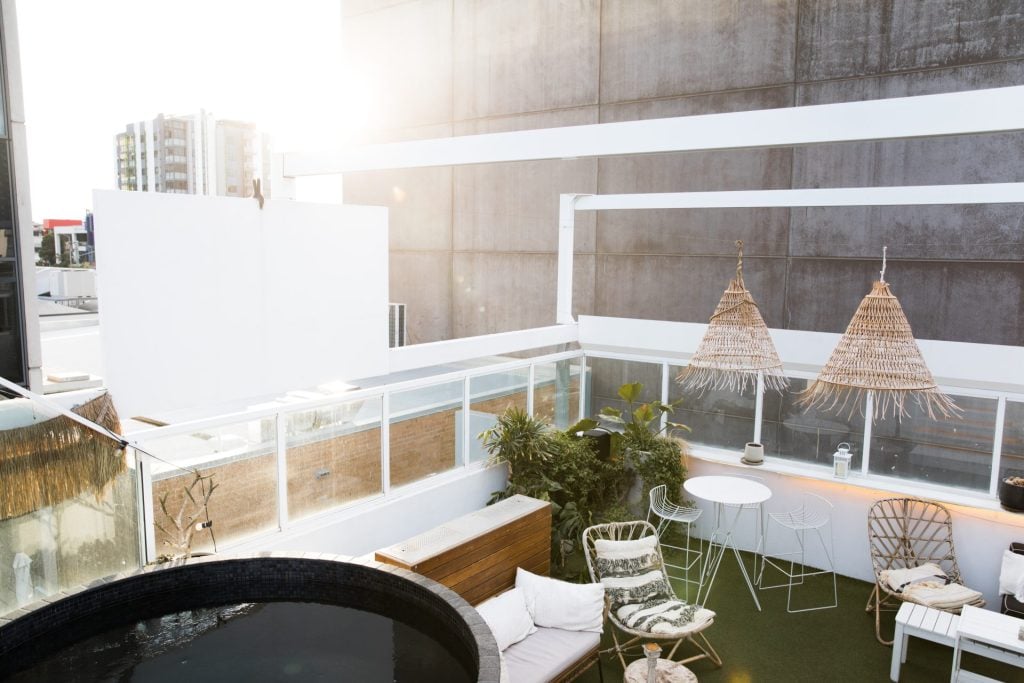
Summer Real Estate Selling Tips #6: Stage Your Home That Reflects Summertime
When you have a new home, staging it to reflect the time of the year can be a smart move, especially if you’re in the process of selling your home and looking to maximize your return on investment. It’s important to note that staging alone won’t necessarily sell your home, but it can certainly make a difference in how potential buyers perceive your home and the overall impression it leaves on them.
Some homeowners make the mistake of believing that staging is an absolute requirement, but that’s not always the case. In fact, when choosing a real estate agent to sell your home, don’t solely focus on their staging designation. Instead, consider their experience and track record of selling homes in your area during the current time of the year.
If you’re selling your home during the summer, taking advantage of summer staging tips such as incorporating bright flowers and summer scents can make your home stand out without breaking the bank. Remember, the goal of staging is to enhance the appearance of your home, not to spend a lot of money on expensive decor.
Hire a Real Estate Agent
When you want to sell your home, choosing a top real estate agent is vital to the success of the sale, regardless of the time of the year. This summer, there are dozens of reasons why having a top agent in your corner cannot be understated. In most real estate markets across the world, there are thousands of agents to choose from, so knowing how to interview them is crucial. Asking the right questions can be the difference between making the right choice and the wrong one.
What are some of the most important things to ask real estate agents and to consider when selling your home during the summer? Below are just 5 of the most important to do!
- What real estate marketing strategies actually sell homes?
- Do you use those marketing strategies?
- What methods do you use to determine what price to recommend to your sellers?
- What is your list price to sale price ratio?
- On average, how long do your listings take to sell?
One key takeaway is that not all real estate agents are the same, even those who work for the same company. Each agent uses different techniques to price and market a home, among other things, so choose carefully.

Brittany Homes have the Perfect Home in the Summer
Summer is a great time of year to sell your home. Summer season can be a great opportunity to attract potential buyers who are looking to move before the start of the new school year or before the colder months arrive. With the right preparation and strategies in place, selling your home during the summer can be a successful and profitable experience.
At Brittany Corporation, we understand the importance of selling your home at the right time of the year and with the right approach. Our team of experienced real estate agents can guide you through the process of selling your home during the summer, and help you get the best possible price for your property.
Contact us today to schedule a consultation and take the first step towards your next dream home. You may visit our LinkedIn and Youtube accounts to see our brand-new houses perfect for the summertime.
Suggested Read: Summer Selling Success: Insights From Top Real Estate Agents
Suggested Read: Maximizing Your Condo’s Summer Potential
Suggested Read: How To Take Care Of Your Designer Bags
Suggested Read: Home Staging For Maximum Appeal
Suggested Read: Home Seller Tips For 2023
The Land Transportation Office (LTO) announced on April 21, 2023, that it would extend the validity of the license expiring from April 24 to October 31 and waive all penalties for late renewal of the driver’s license.
According to Assistant Secretary Jose Arturo Tugade, many have spoken about the criticism against the lack of production of plastic cards for licenses ever since the issue persisted in 2015. The LTO even admitted that it had a backlog of 5.2 million already-qualified motorists who had not been issued proper licenses after being paid for them.
This led to the stopgap solution of the agency to issue temporary licenses on paper, but netizens complained that this type of identification document is not acceptable for certain uses.
“Right and Respectable License, not a Mere Piece of Paper”
Senator Grace Poe, the chair of the Senate Committee on Public Services, demanded the Department of Transportation (DOTr) address the problem that has been occurring for eight years.
Poe said that DOTr, which supervises LTO, should give motorists the “right and respectable license, not a mere piece of paper.” She added that the “inconvenience hounding our motorists due to the unavailability of the license cards defeats the purpose of the law,” which is the Republic Act No. 10930 or the law rationalizing and strengthening driver’s license renewal.
The DOTr commented that it was already working to be allowed to purchase new driver’s license cards.

What is RA 10930?
RA 10930 is a law being implemented by the LTO which mandates extending the validity of driver’s license. All clients must go through the Comprehensive Driver’s Education (CDE) to receive their CDE certificate.
How to Renew a Driver’s License with a 10-year Validity?
You can renew your driver’s license with a validity of 10 years if you don’t have any traffic violation record. However, there will only be a five-year validity of the driver’s license if you have a traffic violation record. To renew your driver’s license, you have to create an account on the LTMS Portal and have a printed copy of your CDE Certificate and Medical Certificate.
CDE Certificates are available on the LTO portal, LTO officers, and LTO-Accredited Driving School. LTO clients are advised to register and participate in the Land Transportation Management System on the LTO portal.
The Land Transportation Management System (LTMS) is a portal where it allows the LTO’s clients to register a “lifetime” account with them, which is one of the steps in getting a driver’s license.
What are the Driver’s License renewal Requirements?
For those who wish to renew their licenses, are the following requirements:
- Fully accomplished application form for driver’s license (ADL)
- Original Driver’s License (Non-professional or Professional)
- Original and photocopy of any government-issued ID bearing the photo and signature of the application
- Taxpayer’s Identification Number (TIN), if employed
- Medical Examination Certificate
Step-by-Step Guide to Online Renewal To Avoid Penalties For Expiring Driver’s License
Online renewal of a driver’s license saves a lot of time, energy, and money, plus it is safe and convenient. Follow these steps when applying through the LTMS portal:
- Register through the LTMS portal.
- Confirm your account by clicking on the confirmation link sent to your email within 24 hours.
- Fill out the personal data sheet.
- Click “Licensing” on the dashboard.
- Read and click “Accept” the Terms of Use.
- Fill out the Online Application Form.
- Under License Classification, click “Driver’s License.”
- Select “Renewal” as the Type of Application
- Submit your online application form.
Note that multiple applications are allowed, so you can choose more options.

Step-by-Step Guide to Driver’s License Renewal in LTO Offices
If you still prefer the traditional way of renewing in LTO offices, here are the following steps you need to do:
- Present all requirements for your renewal, and get your queuing number.
- Submit your requirements once your queue number is called.
- Confirm if the details on the system are correct and accurate.
- Pay the necessary fees at the cashier.
- Proceed to the Encoding and Biometric Window to fill out the form in the new system.
- Get your official receipt and driver’s license card.
- Log your details on the log sheet.
Driver’s License Application Costs
As early as now, you should apply for a driver’s license. And you need to know the following costs of getting a Philippine Driver’s License.
If you are an individual who wants to acquire a driver’s license for the first time, you need to pay an application fee of Php100 and a license fee (for professional and non-professional licenses) of Php585. Hence, the total amount is Php685. Take note that you need to have a valid student permit in order to acquire a valid driver’s license.
LTO Driver’s License Renewal Costs
If you plan to renew your driver’s license, you need to pay the application fee of Php100 and a renewal fee of Php585. If you renewed your license late, the following fees apply:
- One day to one year – P75
- One year to one day to two years – P150
- More than two years – P225
Student Driver’s Permit Application Costs
For student drivers, pay an application fee of Php100 and a permit fee of Php150.
Student Driver’s Permit Renewal Costs
For student driver’s permit renewal, pay the Php100 application fee and Php150. For late-renewal penalties, you need to pay the applicable penalties:
- One day to one year – P50
- One year and one day to two years – P100
- More than two years – P150
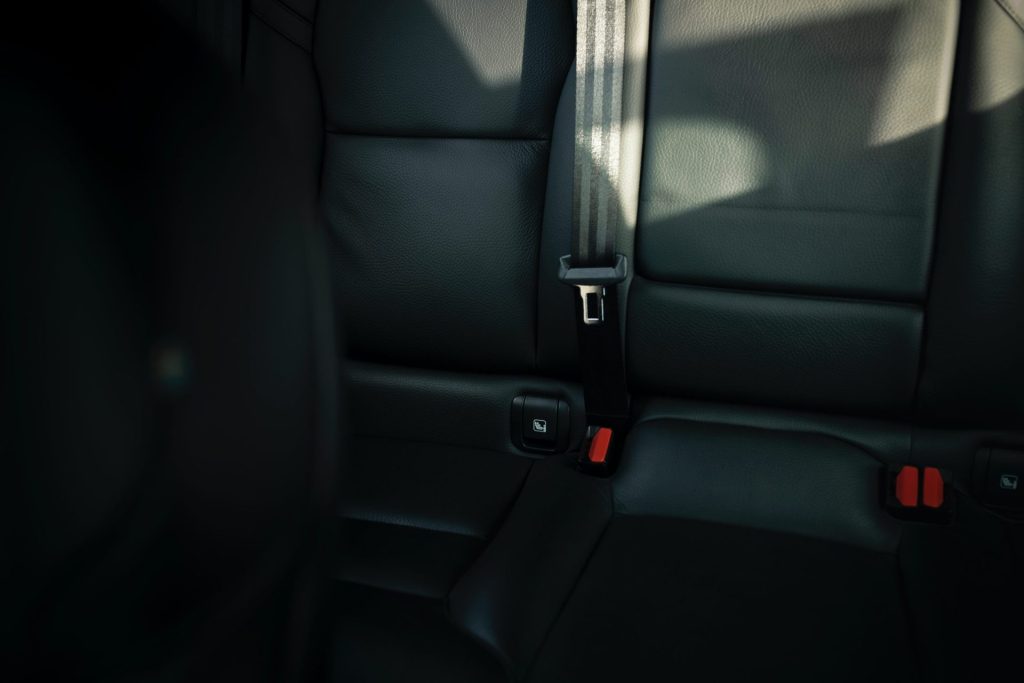
What are the LTO Violations and Penalties for Expiring Drivers License?
Having a driver’s license is one of our daily essentials. Losing it or not having it renewed can lead to various penalties. That’s why before hitting the road, you need to know some penalties for license-related LTO violations in the Philippines.
Driving with an LTO driver’s license
The penalty for driving without a driver’s license is Php3,000. This fine shall also apply to those carrying an expired, suspended, revoked, improper, or fake driver’s license. Student drivers are not also exempted from this penalty if they get caught driving without a duly licensed driver.
Not Wearing a Seatbelt
Not wearing a seatbelt is a big no-no inside your car. Failing to wear a seatbelt shall pay Php1,000 on your first offense, Php2,000 for the second offense, and PHp5,000 for the third and every succeeding offense. If you have children below six years old, do not let them sit in the front seat, as you will be paid the same fine, plus your driver’s license will be suspended for one week.
Reckless Driving
The penalty for reckless driving in the Philippines is a fine between Php2,000 to P10,000 and a suspension of your driver’s license. If you get caught for the first time, the penalty is Php2,000. If you did it for the second time, the penalty is Php3,000 and a three-month suspension on your driver’s license. For the third and subsequent offenses, the fine is Php10,000 and a six-month suspension or revocation of your driver’s license.
Driving Under the Influence of Alcohol and/or Illegal Drugs
Under the Anti-Drunk and Drugged Driving Act, driving under the influence of alcohol or illegal drugs is a serious violation. If the violation results in physical injuries, the penalty will be as provided under Article 263 of the Revised Penal Code, and a fine of Php150,000 to Php250,000. If it resulted in homicide, the penalty will be as provided under Article 249 of the Revised Penal Code, and a fine of Php350,000 to Php500,000.
If it didn’t result in physical injuries or homicide, the penalty will be three months imprisonment and a fine of Php50,000 to Php100,000.
Be Updated with Brittany Corporation
Be updated with the latest developments in the Philippines through Brittany. Aside from being in the know, Brittany offers homes that have state-of-the-art and even classic and timeless designs. Our properties are affordable and accessible to major points in Metro Manila, and even provinces such as Tagaytay, Laguna, Baguio, and Davao.
Visit our LinkedIn and Youtube accounts to know more about Brittany Corporation.
Suggested Read: Top 10 Real Estate Investment Questions
Suggested Read: Real Estate Brokers: How To Stand Out
Suggested Read: Safety 101: Fire Code Of The Philippines
Suggested Read: Licenses And Permits For Your Business
Suggested Read: Baguio Number Coding Scheme
“Spanish-style homes can really stand out from the crowd thanks to the wonderful elements that define this architectural movement.”
Have you become tired of the same color palette and you home interior design? We suggest that you incorporate the Spanish style interior design in your lovely home.
In classic Spanish style homes, natural materials like terra-cotta tiles, wooden beams, and wrought iron designs are often use. They often have warm, earthy colors, decorative touches like arches and columns, and beautiful furniture with detailed details and bright fabrics. Colors should be bright and bold because they can help make a place feel warm and inviting. Colors like red, orange, and yellow, as well as blues and greens, are often used.
With Spanish interior design, you can make a homey space that makes you feel comfortable and at ease.
Now, if you’re ready to create your Spanish-inspired homes keep on reading.
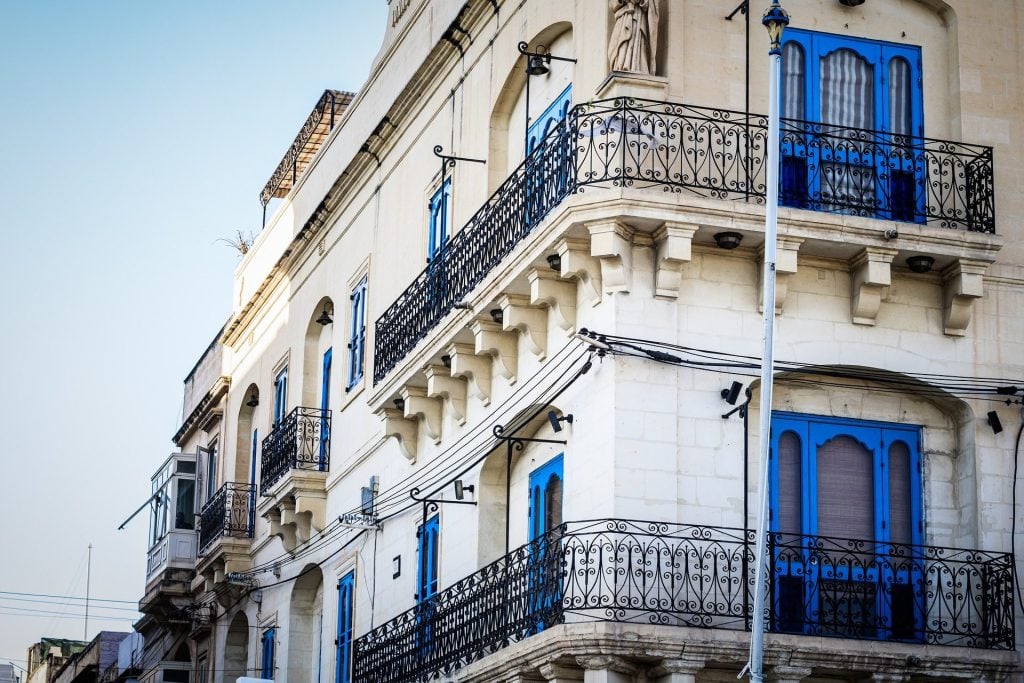
Mediterranean architecture and its history
Mediterranean houses as we know them today are based on an architectural style such as Mediterranean Revival. This style tries to make you feel like you’re in a luxurious Mediterranean house. It became famous in the 1920s, when a cultural fixation on money and leisure led to a boom in seaside resorts.
Homes designed in the Mediterranean Revival style are one of a kind because they combine design elements from a variety of regional cultures. The most prevalent ones are Italian and Spanish. Listed below is an analysis of the distinctions between the two:
Rebirth of Italian Culture, 1890-1930
Italian Renaissance architecture, as the name implies, is largely based on that of the 16th century Italy. Their towering stature and ornate touches like columns and arches are clear indicators of this. However, the style itself, which emerged at the end of the Victorian era, incorporates elements from earlier eras. Italian Renaissance architecture is the most opulent of the several Mediterranean architectural forms.
Rebirth of Spanish Culture, 1915-1930
Houses in the Spanish Revival style are modeled after those built by the Spanish colonists in the 16th century. This kind of building was quite popular in the sunshine states along the shore. Spanish Revival architecture tends to be less ornate than some of its Mediterranean counterparts. They have flatter roofs, making them look heavier, and cleaner overall.
Modern Spanish
Contemporary buildings in the Mediterranean style might use either the Spanish or Italian approach. It’s a return to an earlier emphasis on vacation-style accommodations. Mediterranean architecture is the inspiration for these residences, which combine classic design elements with contemporary conveniences. An emphasis on indoor-outdoor living is common in these homes’ open floor layouts, large, modern kitchens, and high ceilings.
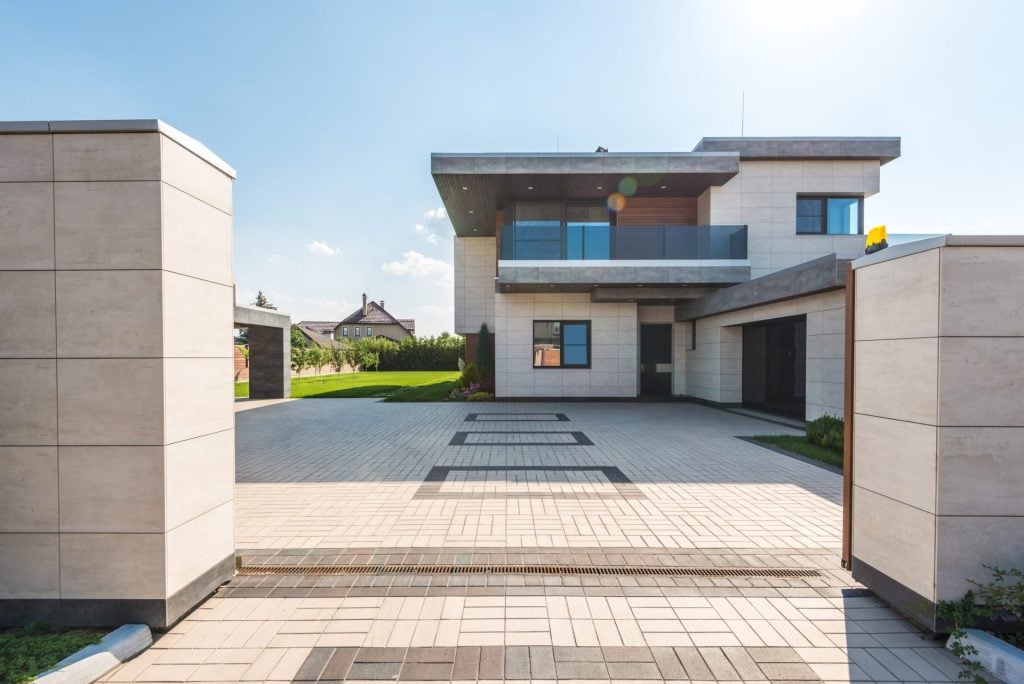
Colors Of Spain In Focus: What makes a Spanish homes?
The following are some clear differences between the sub-types, but there are also a few things that all of them have in common:
Colors Of Spain & Exterior features
Faces that are big and perfect
- Stucco walls
- Low-pitched roofs made of tiles
- Arched doorways and windows
- Balconies and window grilles made of wrought iron
- Gardens or patios in the style of Europe
Colors Of Spain & Interior features
- One to two stories
- Plan with a rectangular shape
- Large windows
- Wood and decorative tile are used a lot.
- Designed to let breezes flow through the house
Did you know you can have a living space that is inspired of Spanish style homes? If you check Brittany’s Luxury Estate in Santa Rosa, you can see this great example of how new and old can work together in a mixed-use development.
The name of Pontevedra comes from a city in Spain. Like that city, Pontevedra gives the image of a sanctuary where everything is close by and each district has its own main courtyard that gives it its own personality.
Parks, tree-lined streets, fountains, and gardens, shops with coats of arms on their fronts, squares with lots of people, and sidewalk cafés with a lively vibe dot the interconnected streets, while the commercial district’s stone-and-glass buildings are dripping with potted greenery, making it feel more natural as you walk through the streets.
What are the colors of Spanish colonial interior design?
Rustic elegance is a hallmark of most Spanish-style dwellings. This is reflected in the terracotta aesthetic, which typically employs warm tones of orange, red, and deep brown. It’s a popular look because of how at ease and comfortable it makes visitors feel.
Achieving The Colors of Spain into Your Home
There are countless ways to incorporate some Spanish influence into your décor, whether you plan to fully embrace Spanish design throughout your house or just want to add a few pieces of the style to an existing design.

Revitalize the Interior’s Color Scheme
Use each wall as a blank canvas on which to unleash your imagination with color and pattern to create a soothing atmosphere in a home decorated in the Spanish style. Adding regionally inspired murals, artwork, or decorations like complex tiles or wrought iron pieces to white walls can make a room feel cozier and more intimate.
Homes in the Spanish style often include a color palette heavy on earthy tones like terracotta, burnt orange, and reddish brown. These are great for increasing a room’s coziness and making more daring color choices and decorative accents stand out.
Landscape in the style of the Mediterranean
Succulents are a great way to incorporate Spanish or Mediterranean landscaping elements into your home or garden. The pots and plants used for interior and exterior landscaping on a Spanish-style house are very different. A little bit of authentic Spanish design inside the house may rapidly perk up the atmosphere and unify the inside and exterior.
Large, brilliant blue glazed pots and terracotta containers stuffed with succulents and other low-maintenance plants are common tools. Private indoor gardens can be created in larger Spanish-style homes by combining wrought-iron wrapped boxed plants with regional olive and palm trees displayed in large urns.
A private courtyard with Spanish-style landscaping is a common feature of high-end residences, as is a room devoted entirely to an indoor landscaping project. In such cases, the ‘flooring’ is typically a natural material, such as one of the following:
- Saltillo Tiles
- Slump Block
- Cantera Stone
- Pebbles and the
- Patterned Brick
Try Things That Are Colonial-Inspired
Many people don’t know that what we call current Spanish style comes from the way Spanish style influenced American Colonial-style homes. Modern Spanish-style furniture could be thought of as a mix of the two ideas. This makes it a natural choice to use furniture and interior design elements that are based on Colonial styles.
In the modern Spanish style, many of the decorations come from the old Spanish things that people brought to the Americas, but they have been “refreshed” to feel more modern. Instead of the typical clay tile floors, the owners may opt for hardwood floors in the manner of the Colonial era. Often, these floor installations have warm or bright rugs with patterns that look like traditional Spanish decor.
Most of the furniture in Spanish style is made of wood or cast iron. If you want to give a nod to Colonial ideas, you could use heavy, big, dark wooden pieces that look like they will last for a long time. Heavy accent tables, tall headboards for beds, long dining tables, and chairs with high backs are all great adds.
The intricate carvings on the wood furniture that are typical of the Spanish Baroque style and go well with the home’s building bring the two styles together. Quatrefoil windows with heavy draperies, rich designs or fabric art on the walls, and sophisticated lighting are further hallmarks of the Colonial style.
Conclusion
Integrate elements of Spanish architecture and design into your home. Use the style’s colors, textures, and materials throughout your home to make it feel more inviting and distinctive. Make it your own by incorporating elements of your home’s design, and revel in the resulting depth.
Spanish-style homes can really stand out from the crowd thanks to the wonderful elements that define this architectural movement. The use of natural materials and artistic accents combined with warm hues creates an atmosphere reminiscent of a luxury villa.
Suggested Read: How To Design Your Home: Colors Of Old America
Suggested Read: Exquisite Craftsmanship Of Spanish Architecture
Suggested Read: Guide To Spanish-Themed House Design
Suggested Read: Colors Of A Rustic Spanish Style Home
Suggested Read: Best Features Of An American Home
